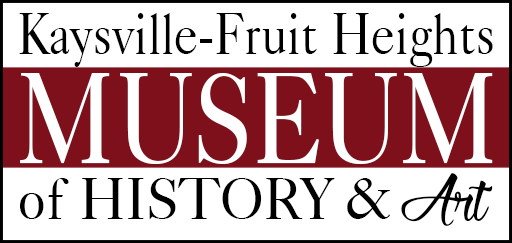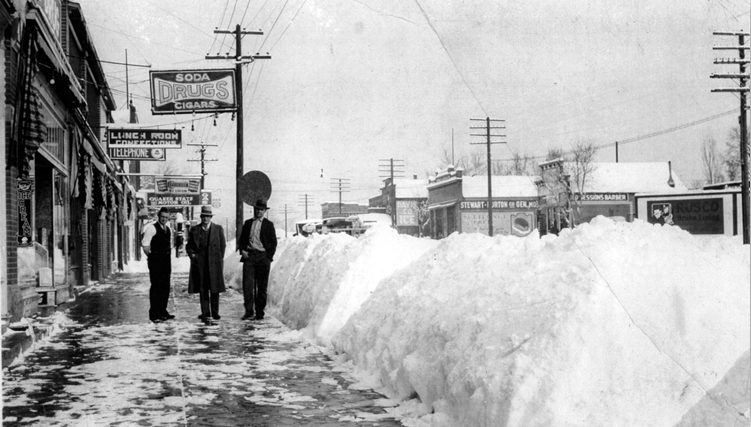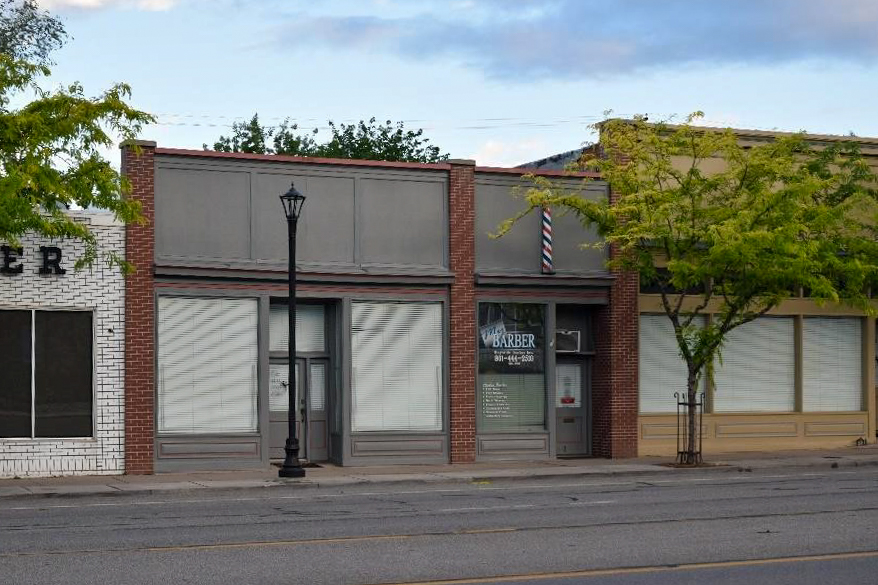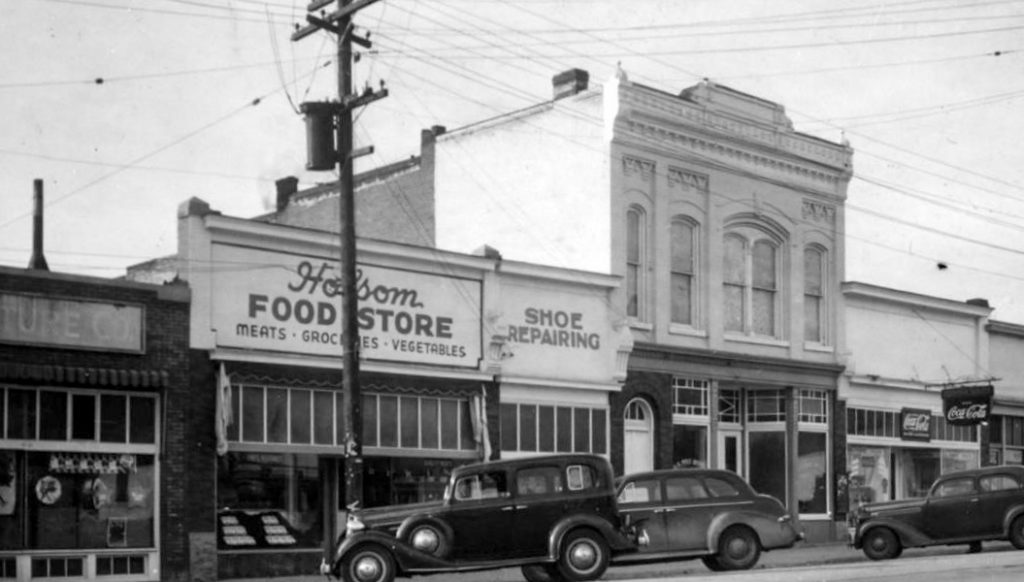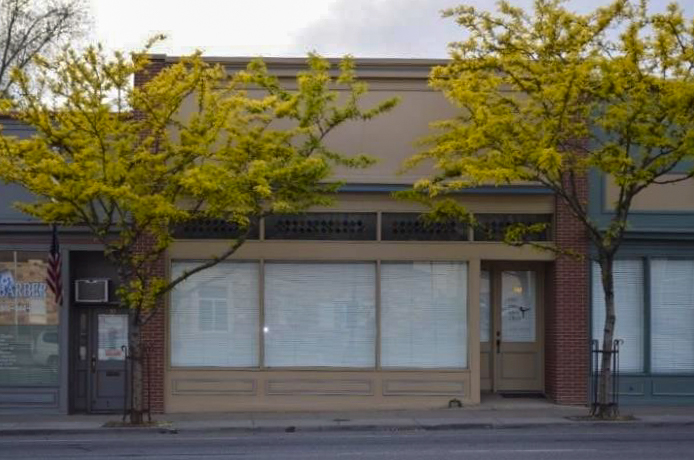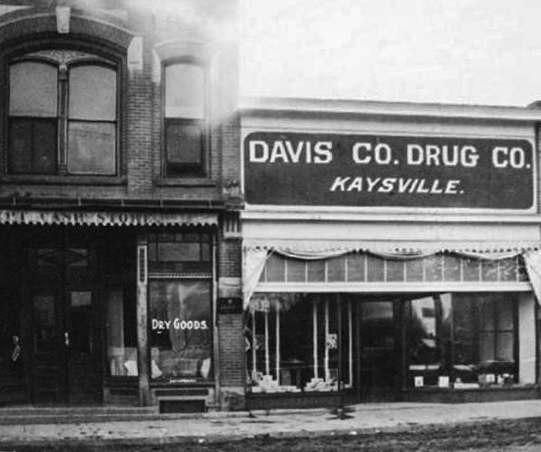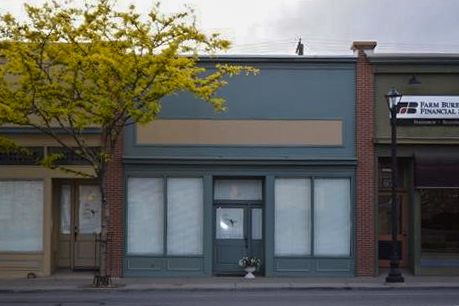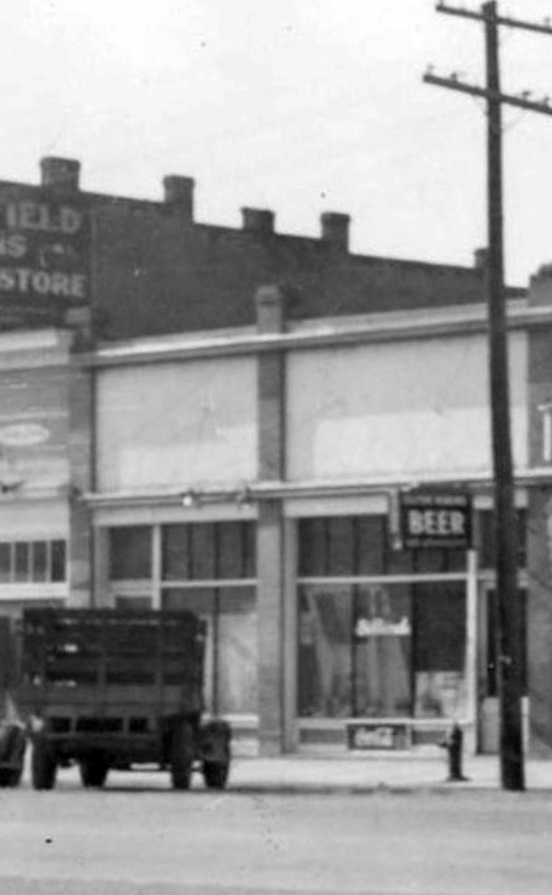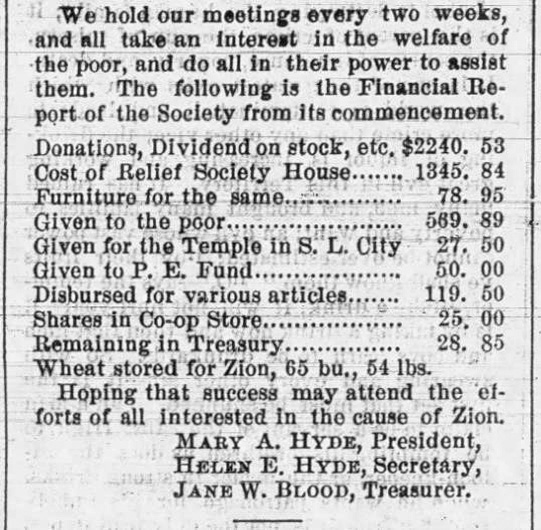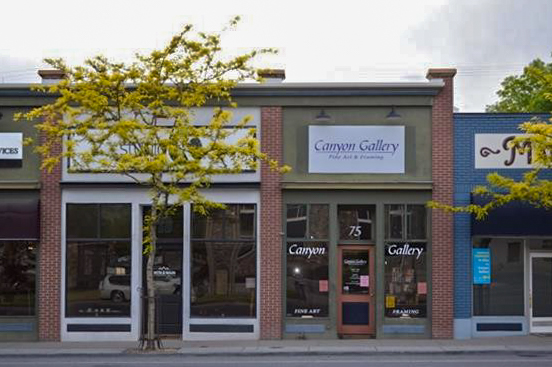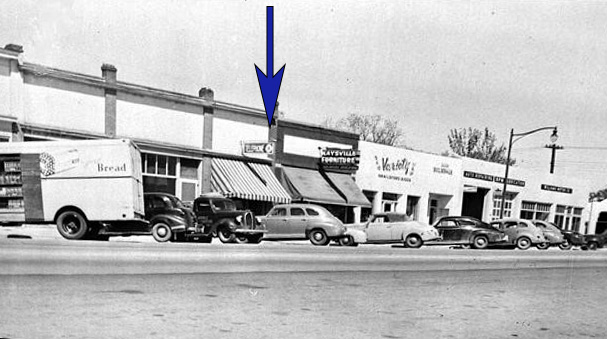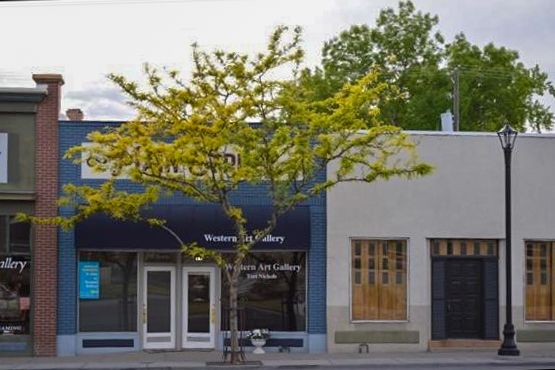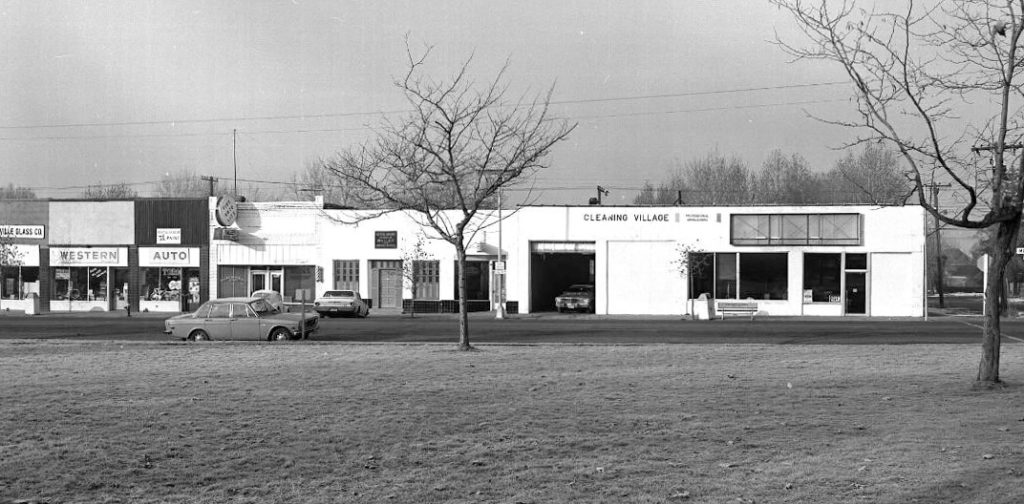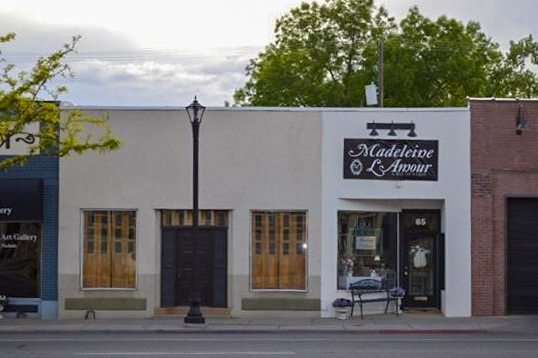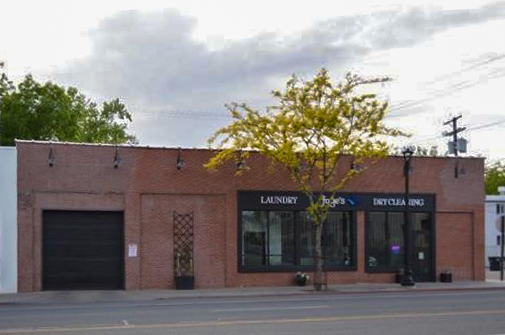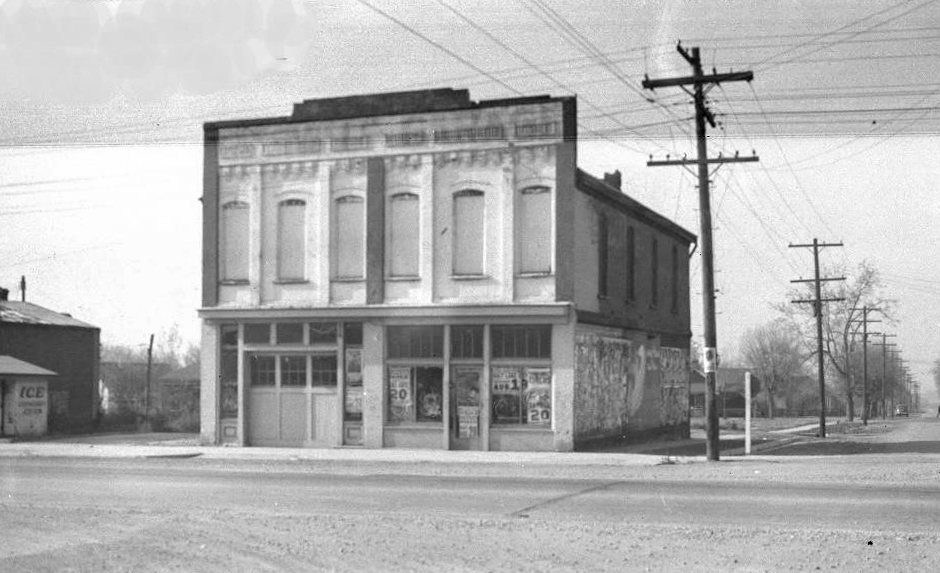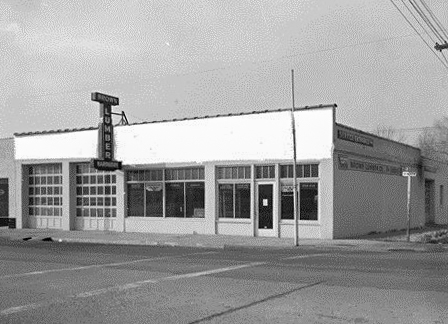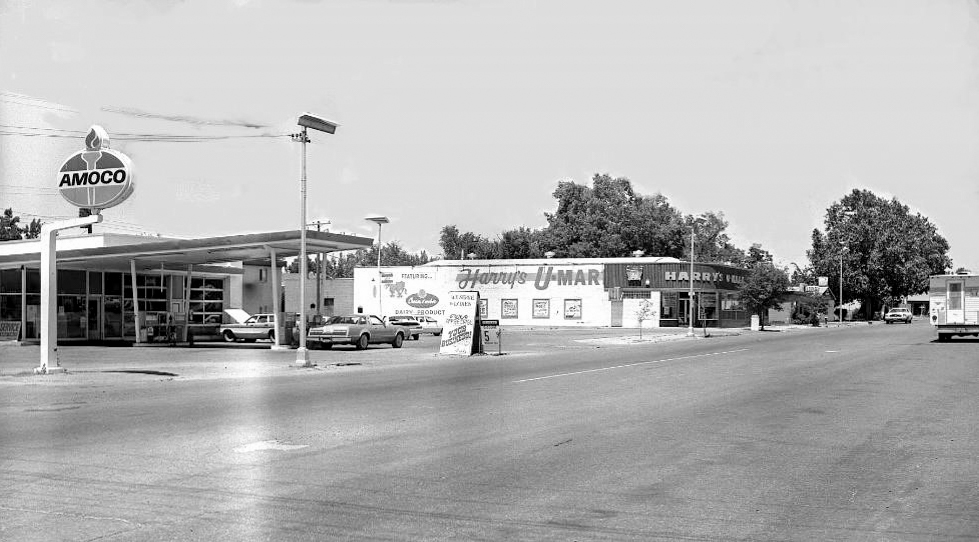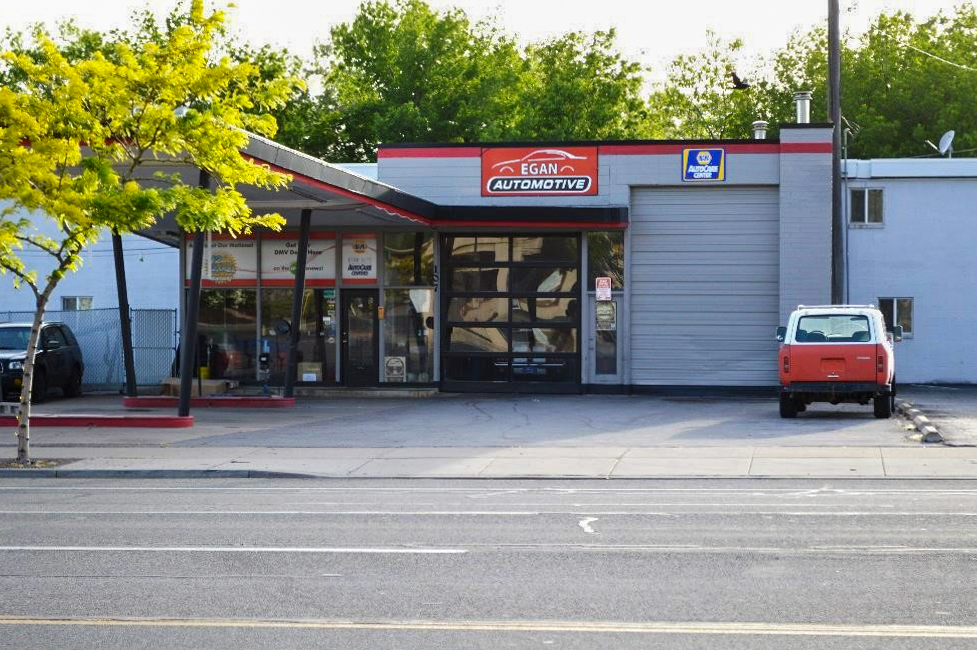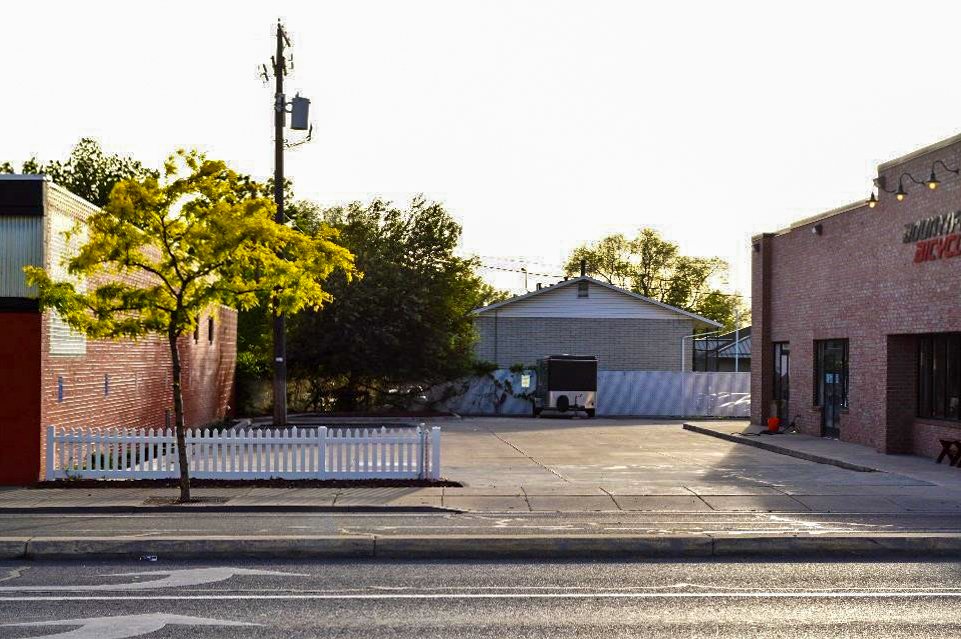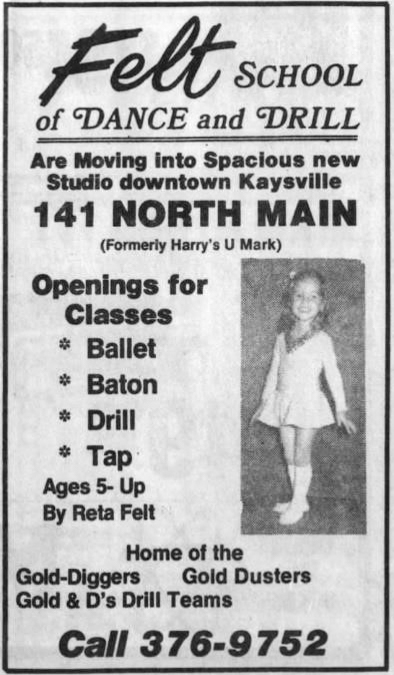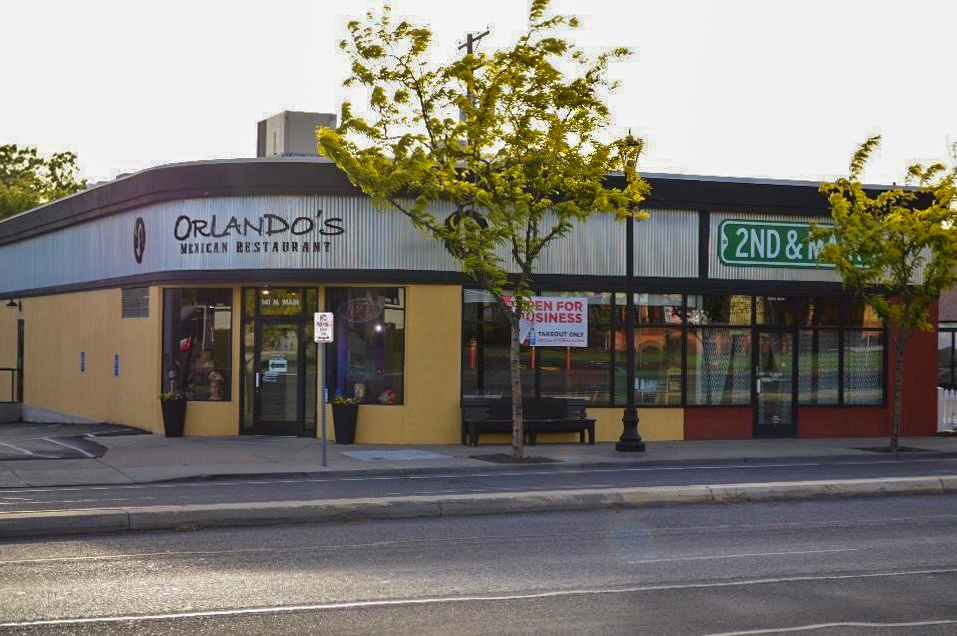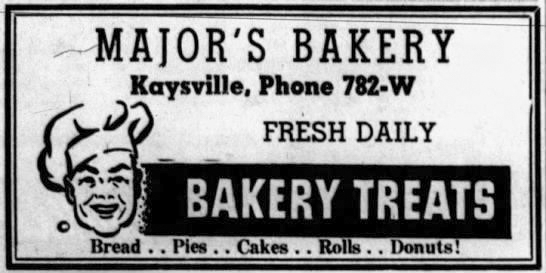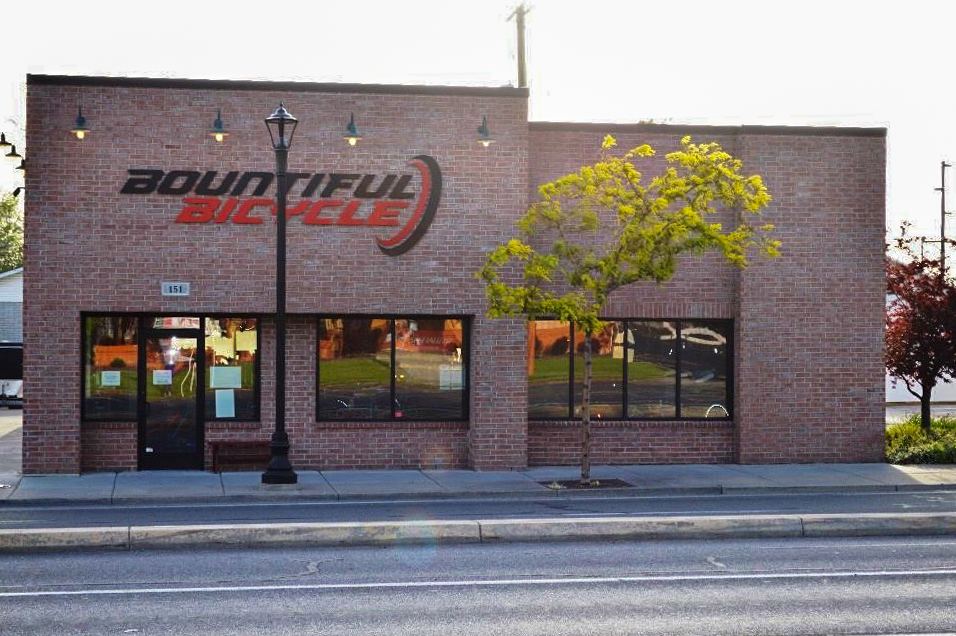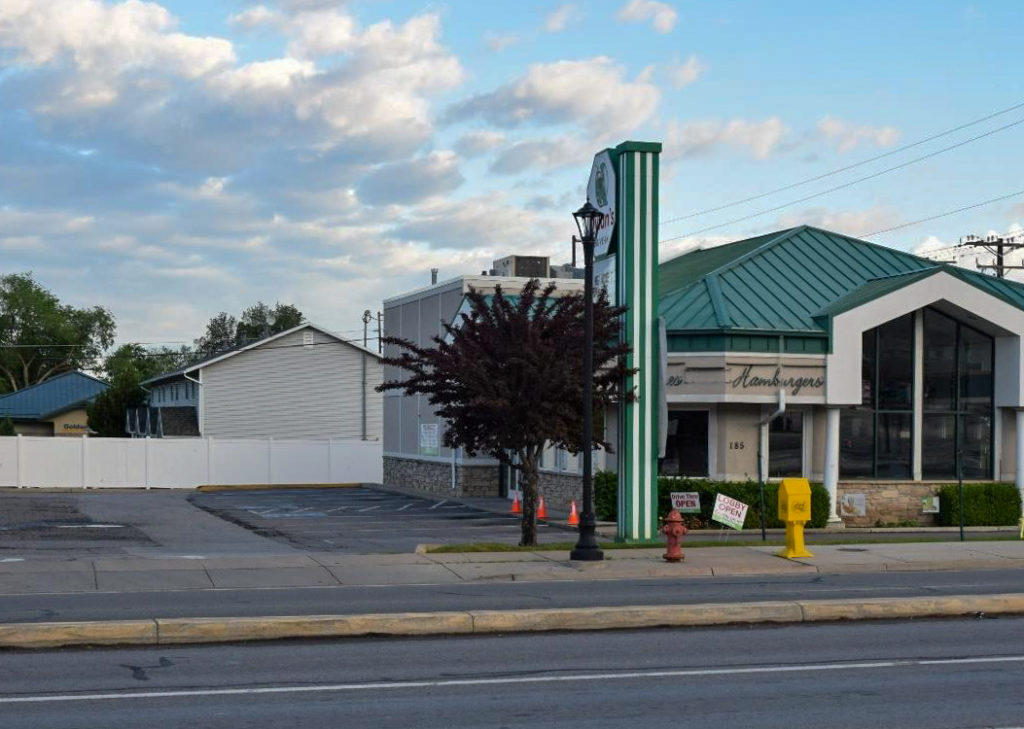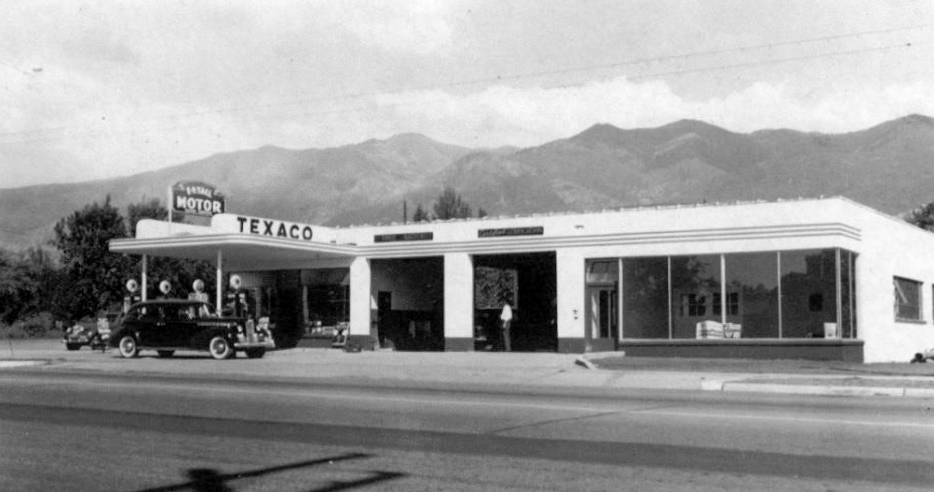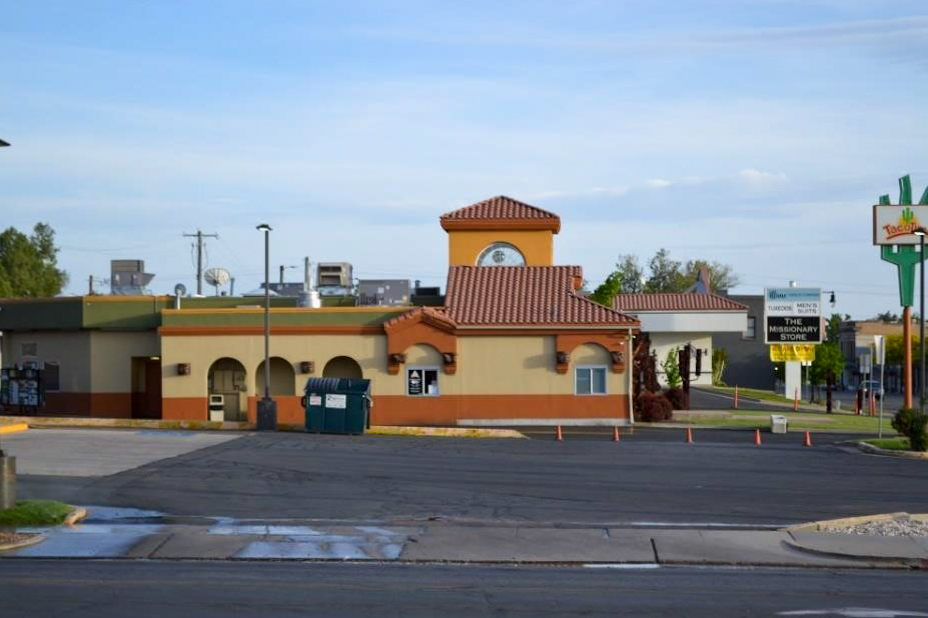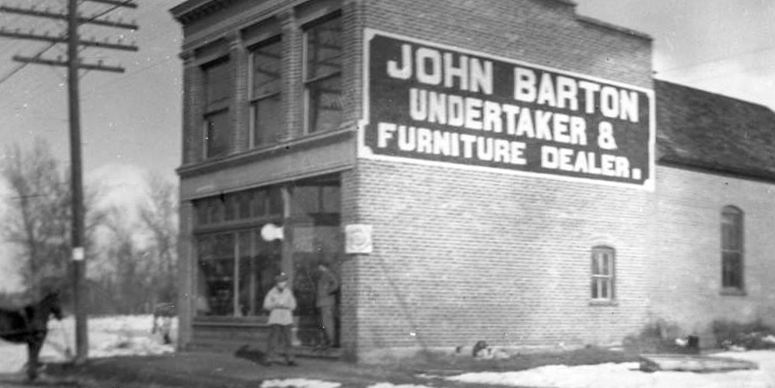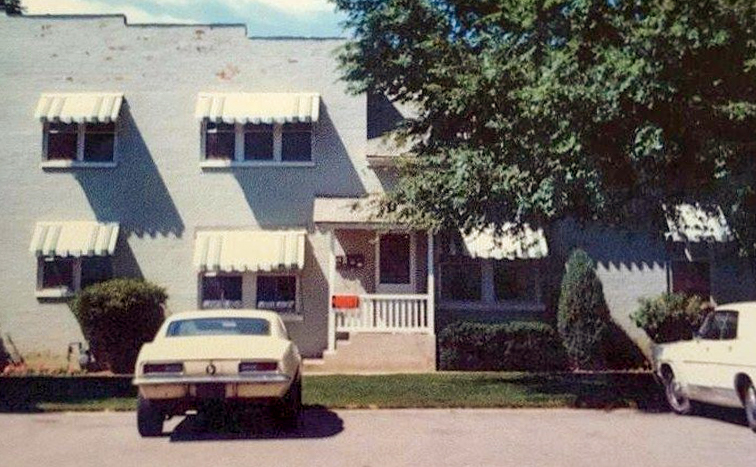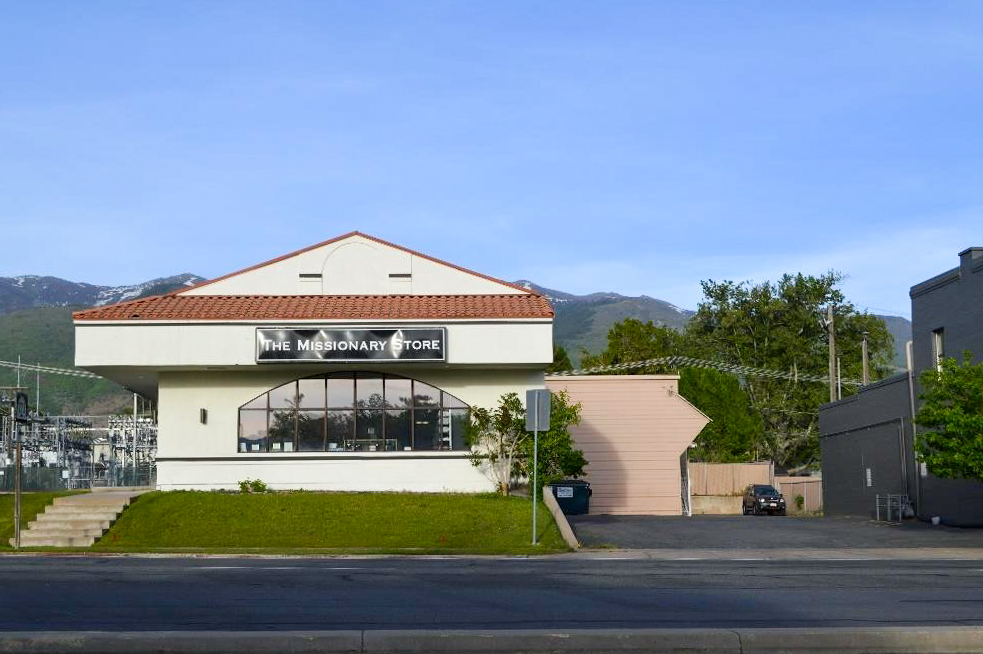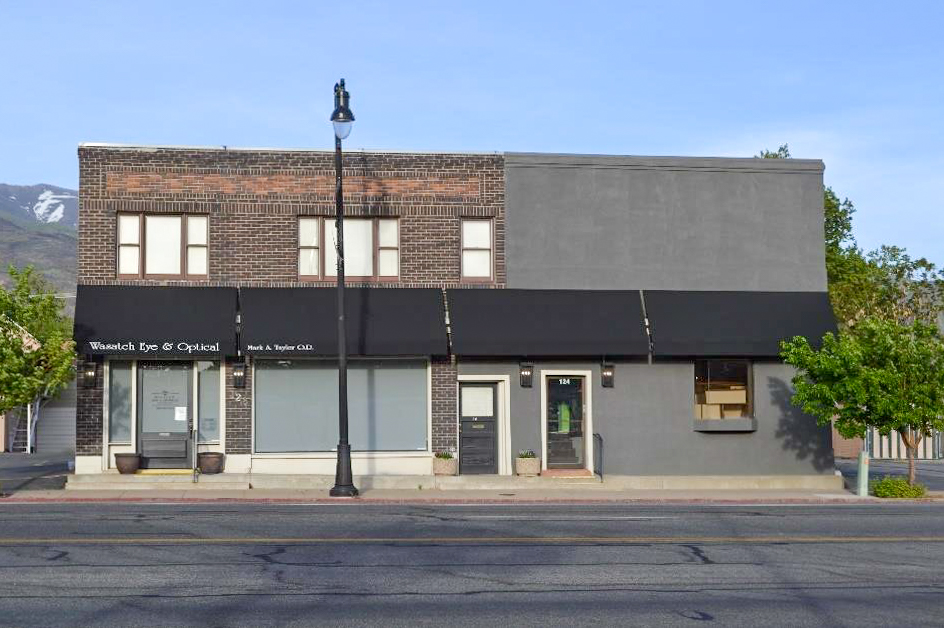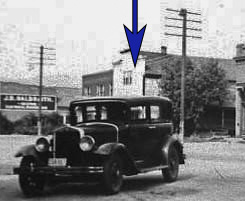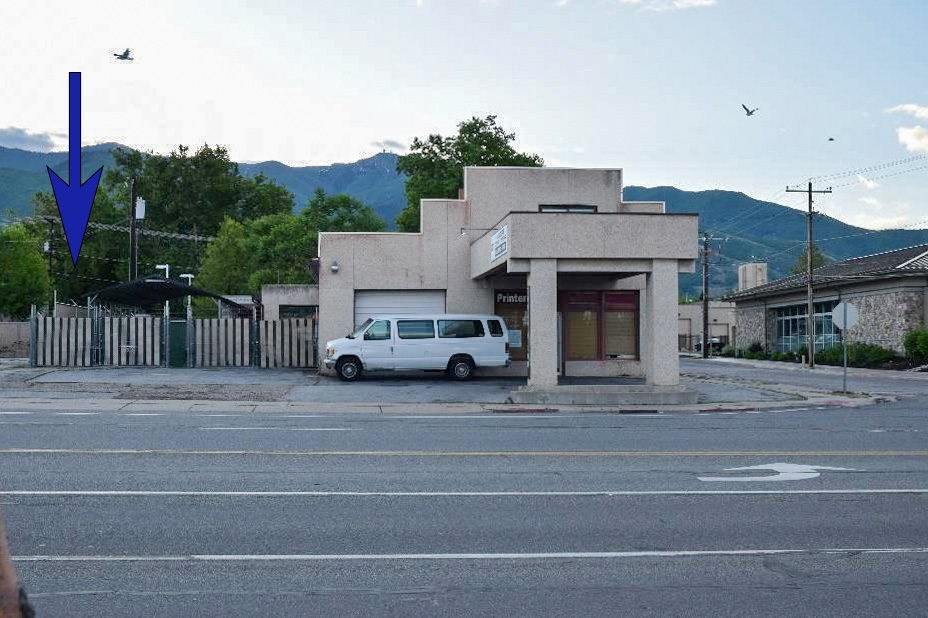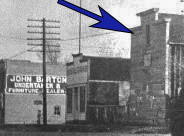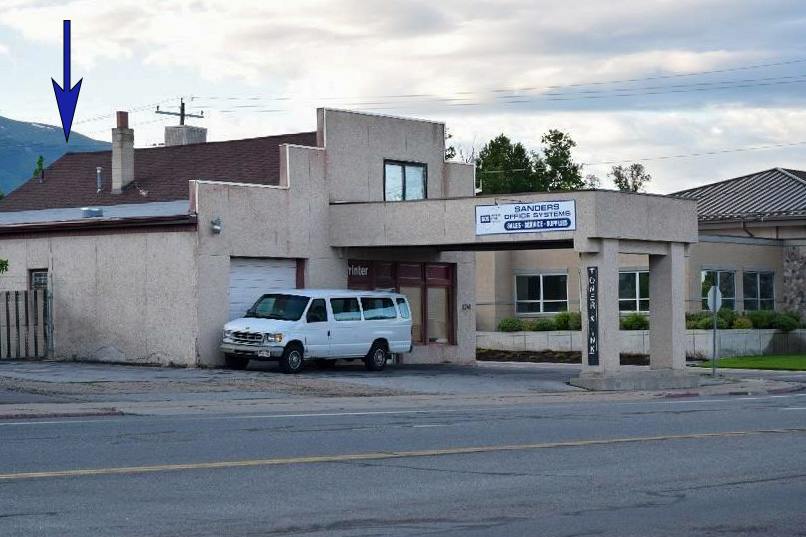Virtual Tour
PRESERVING THE PAST FOR THE FUTURE
OLD TOWN MAIN STREET
Kaysville Main Street Walking Tour
50 North to 200 North
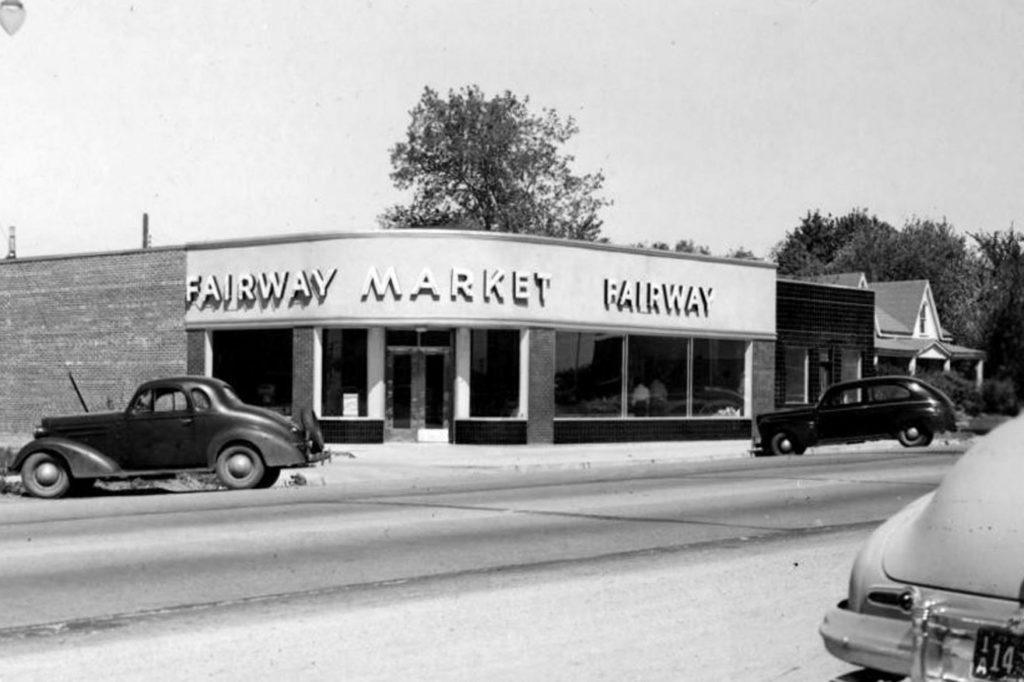 To walk its old streets is to feel the personality of Kaysville City.
To walk its old streets is to feel the personality of Kaysville City.
Why not get up, get out and walk today? Kaysville’s Main Street first appeared about 1854 as the State Road. It, along with the Mountain Road, became main thoroughfares connecting neighboring towns of the county. Kaysville was the first incorporated town in Davis County and settled primarily by English pioneers beginning in 1850. Of the first 29 families to move here, some of the others originated in New York, Vermont, and Kentucky (Preece). This portion of the Main Street tour (part 2) covers the northern portion of both the west and east sides of Main Street in the historic center of town and is designed to be walked. A fun fact to note is that the odd and even number arrangement reverses at Center Street with odd numbers on the west side to the north and even numbers to the south.
1850 Main Street
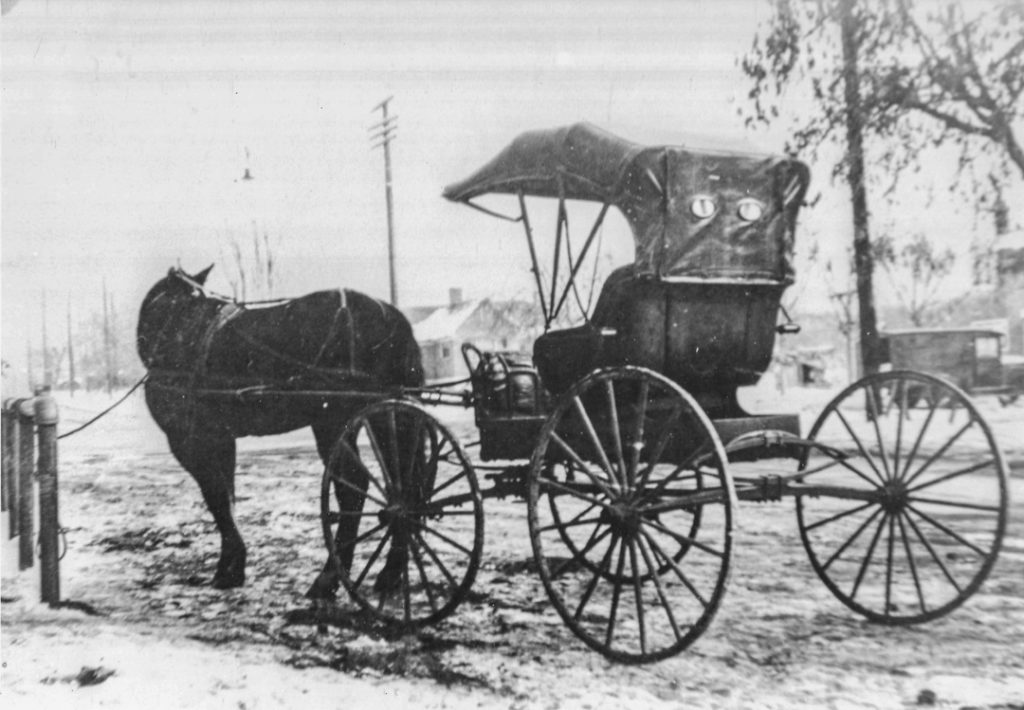 Kaysville’s Main Street first appeared about 1854 as the State Road. It, along with the Mountain Road, became main thorough fares connecting neighboring towns of the county. Kaysville was the first incorporated town in Davis County and settled primarily by English pioneers beginning in 1850. Of the first 29 families to move here, some of the others originated in New York, Vermont, and Kentucky (Preece). Part 1 of the Main Street tour covers the two-block length of the historic center of town and is designed to be walked. Part 2 will be a driving tour of the northern commercial avenue of the town. A fun fact to note is that the odd and even
Kaysville’s Main Street first appeared about 1854 as the State Road. It, along with the Mountain Road, became main thorough fares connecting neighboring towns of the county. Kaysville was the first incorporated town in Davis County and settled primarily by English pioneers beginning in 1850. Of the first 29 families to move here, some of the others originated in New York, Vermont, and Kentucky (Preece). Part 1 of the Main Street tour covers the two-block length of the historic center of town and is designed to be walked. Part 2 will be a driving tour of the northern commercial avenue of the town. A fun fact to note is that the odd and even
number arrangement reverses at Center Street with odd numbers on the west side to the north and even numbers to the south.
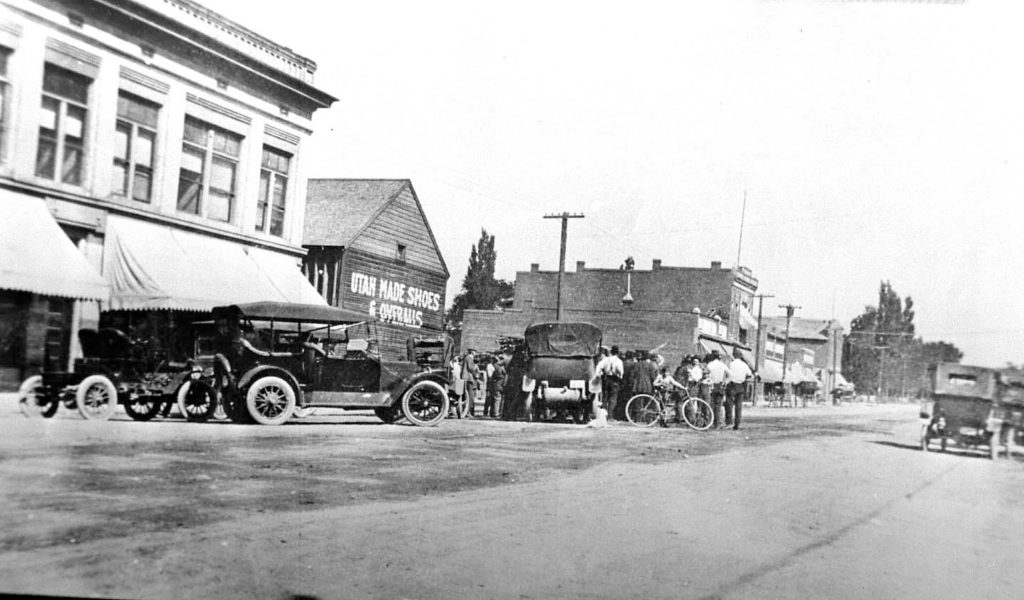 Circa 1920-30’s. Imagine this without cars… and fewer buildings.
Circa 1920-30’s. Imagine this without cars… and fewer buildings.
1854 Town Plat Surveyed
In 1854, Jesse W. Fox, LDS Church surveyor produced a town plat
containing 12 blocks with east-west numbering, 6 blocks with north south orientation named after trees; 7th Street became Main Street.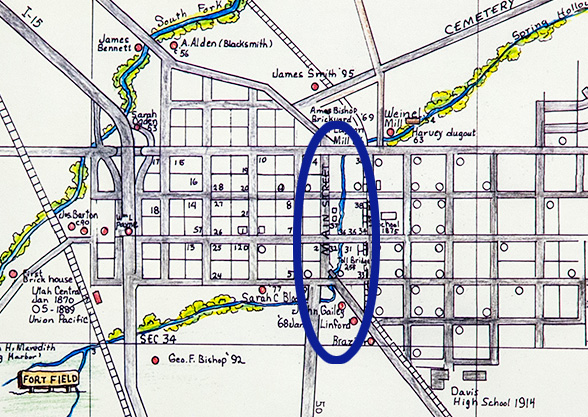
It has been said that water controls the history of the West. Through these blocks ran a life-giving spring-fed stream, the source for which did not come from the mountains as was the usual case. Spring Hollow Creek had steep banks along most of its length. Running year-round it flowed southwest parallel to Cemetery Road, crossed Cherry Street (200 North) and ran along the east side of what was to become Main Street until about Maple Street (100 South) where it turned west (BS ppt) Toll bridge.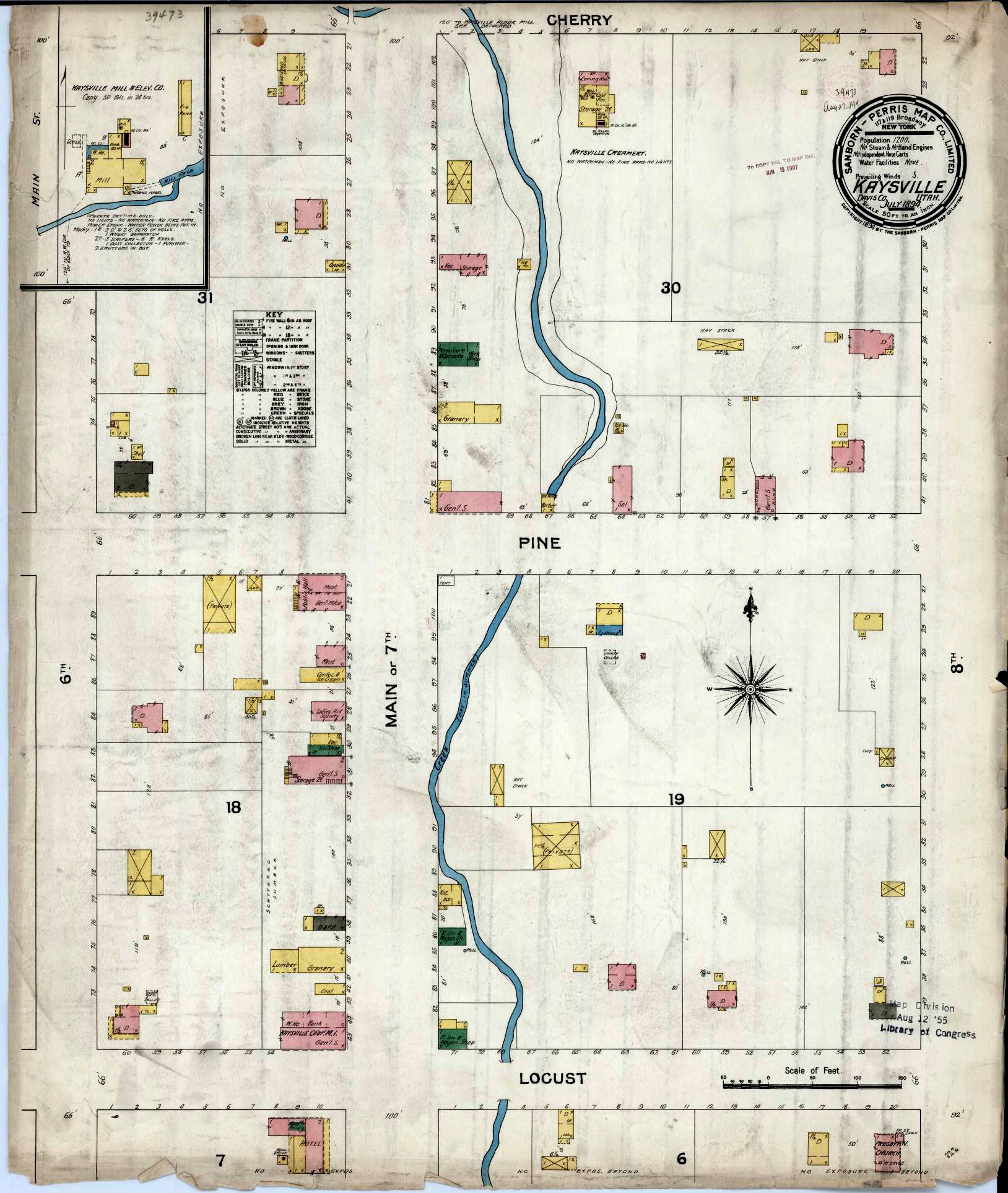
1894 Fireman’s Insurance Map – Library of Congress (external Link)
1944 Modernizing & Remodeling
From there and back again is one theme of the history of Kaysville. In 1944, members of the business community were anxious to present a modern face to visitors. As a result of that concern, the second story of many buildings were removed, and the fronts spruced up. This concern was instigated by a new development on the west side of Main Street begun by Ray Ashton. About forty years later a redevelopment agency was formed in 1980 because of the “eroding downtown business district” with federal block grant funding. A fire on April 1st of 1983 “spurred the recent redevelopment. The Layton and Sanders buildings took on a new look as they were remodeled “to resemble turn-of-the century type architecture.” (Lakeside) The Weekly Reflex printed an article in 1922, boasting of Chamber of Commerce “where men and women are admitted on equal terms.” The 19th Amendment had recently passed, and citizens strove for equality and progress, a work that continues in 2020. The club’s president was W. P. Epperson, Mrs. J. W. Thornley, vice president, and H. L. Gleason, secretary.
50 North Main Street
Begin at about 50 North on the west side of the street and continue walking north until you reach 200 North.
Carpentry Shop / H.J. Sheffield & Sons General Mercantile Co. / Library / Post Office/ Telephone Office
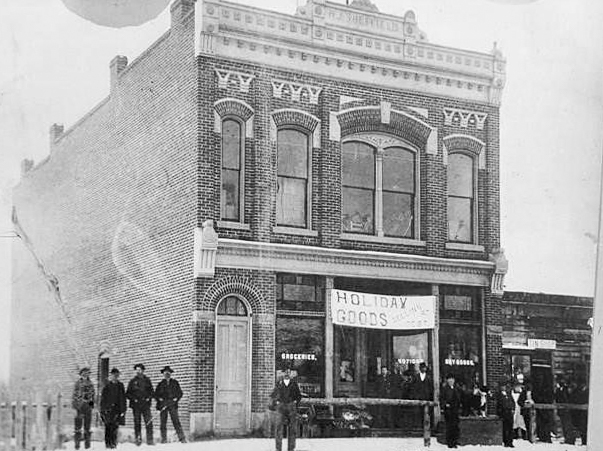 Sheffield Store 1892 (Heritage Museum)
Sheffield Store 1892 (Heritage Museum)
A grocery store was started here by Heber John Sheffield with his wife Sarah Blamires Sheffield. A carpentry shop operated by Charlie Bennett and Tom Lewis was partitioned to create sufficient space for small grocery business which wasn’t over eight feet wide, but quite long. (General)
The business did so well that in the early years of the 1890s they built a large, rather imposing, two-story building in the middle of the Main Street block, adding mercantile and hardware items.
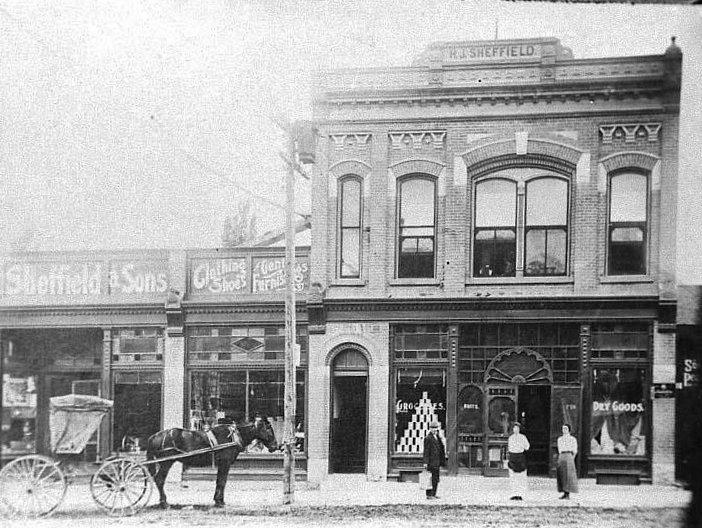 Geo F Bishop carrying a can, clerks Zilla Smith & Hazel Bishop
Geo F Bishop carrying a can, clerks Zilla Smith & Hazel Bishop
The U. S. Post Office occupied rooms on the street level of the Sheffield building from 1915 through 1960. In 1950 the second floor was removed and the space for the post office remodeled for the post office; Mrs. R. O. Layton was owner.
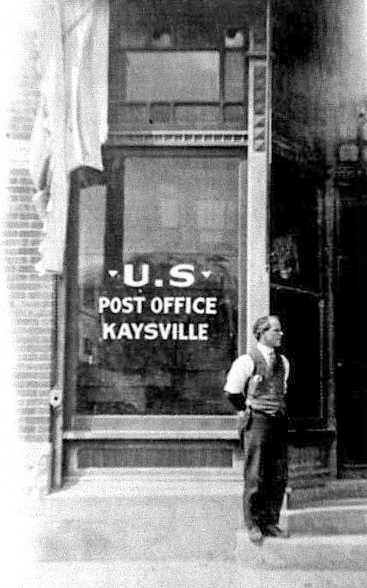 Heber J. Sheffield postmaster 1915-1936
Heber J. Sheffield postmaster 1915-1936
February of 1900 it was suggested that Kaysville should have a free library and reading room. The Kaysville Library and Literary Society was organized with Albert Beazer President; Miss Leah Allen 1st VP; W. L. Galbraith 2nd VP; F. I. Mortenson Sec; and C. Burton Jr. Treas. Maud Barnes, Henry H. Blood were also appointed to the society. A room on the 2nd floor of this mercantile store was rented. Local citizens donated furniture, lamps, maps, newspapers, and books.
Holsom Food Store / Green Hardware / Shoe Repair / Kaysville Flower & Gift
Green Hardware and Kaysville Flower were two of the companies that used the old Sheffield building in the middle of the previous century. Paul Flint was the owner of the flower shop first named Flint Floral on 3rd East where their greenhouses were also located. It was later sold a number of times but functioned as a floral shop during the 1970s. Holsom Food Stores was open 1939 to 1945; the address was probably closer to 41 North Main, but was in one of the buildings which an expanded Sheffield Store had used at one point.
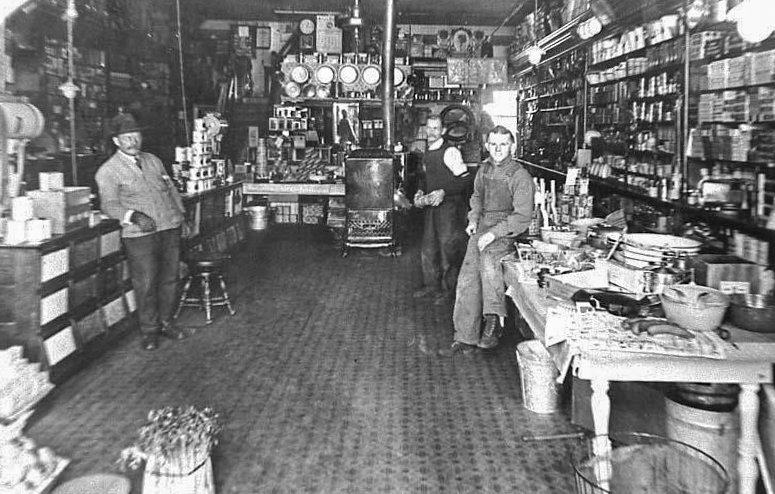 L to R: William Layton, H.J. Sheffield, Kenneth Sheffield
L to R: William Layton, H.J. Sheffield, Kenneth Sheffield
The Bell Telephone Office occupied the front rooms of the Sheffield building second story from 1903-1925; Part of the first story was remodeled and the upper story removed in the early 1940s (to modernize). 1905 telephone exchange was in the front room of the store’s second story.
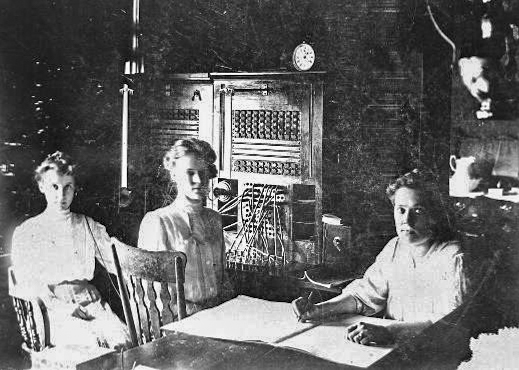 Telephone Office, L to R: Francis Barnes Brown, Ida Smith White, Mrs. James Gardiner – wife of manager
Telephone Office, L to R: Francis Barnes Brown, Ida Smith White, Mrs. James Gardiner – wife of manager
Kowley Drug / Davis County Drug & Liquor Store / DeMonte’s Department Store / Valley Insurance / Guitar City
The Davis County Drug store operated from 1915 to 1925 at this location for. A 1922 newspaper article stated, “Davis County Drug Company has now become a fixed institution under the management of Dorr Marsh. [It was the first drug store to become firmly established.] It is now an indispensable fixture in the business of the city.” (Prosperous)
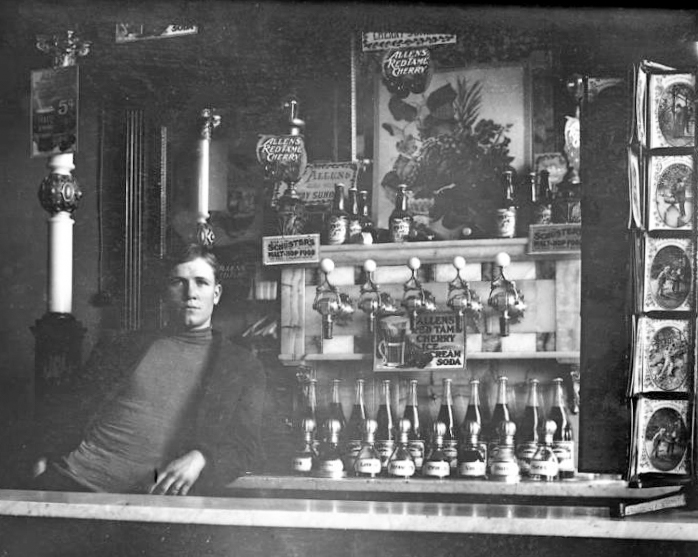 Milton Burton at soda counter of Davis County Drug Store 1915
Milton Burton at soda counter of Davis County Drug Store 1915
(Heritage Museum)
Although the first successful one, Davis County Drug was not the last. For at least twenty years under different names and ownerships a drug store was at this location. Succeeding was Kowley Drug No. 2. Layton druggist, Wallace Cowley opened a Kaysville branch in 1925 and stayed until 1932.
Jonetta Birkin became store manager of a business that existed under three different names. Mrs. Birkin was first to get a license to sell liquor in Kaysville, a liquor store being part of the drug store known variously as Birkin Pharmacy, Kaysville Drug Company, or Kaysville Pharmacy. It housed the Davis County Liquor Store. A 1925 article detailed, “The Birkin pharmacy which is a packaged agency for the liquor control commission was burglarized. About half a dozen pints of whiskey and several candy bars were taken.” Note that, curiously enough, prohibition was the law
from 1920 to 1933. Perhaps the liquor was medicinal.
In 1953, DeMonte Department Store were occupants of 63 North Main Street, the first store being in Bountiful. The first L & L Floor Covering, The Pendulum, and Kaysville TV & Video followed.
In 1960, Valley Insurance Agency was located at 67 North Main. Starlight Jewelers, Guitar City followed up. Numerous occupants have served the community over the years.
Ladies Aid, Relief Society Hall/ Gailey Building: Bowman’s 2nd Golden Rule Store / Telephone Office / Kaysville Glass / Western Auto and Hardware
An adobe brick building was erected in 1870 by the Kaysville Ward Relief Society. It had a food and grain storage area in the basement and served as a humanitarian center.
It functioned as a meeting place between 1870-1914 until the tabernacle was built. An east wind blew the building down between 1873-1875, but it was rebuilt and used for a longer time.
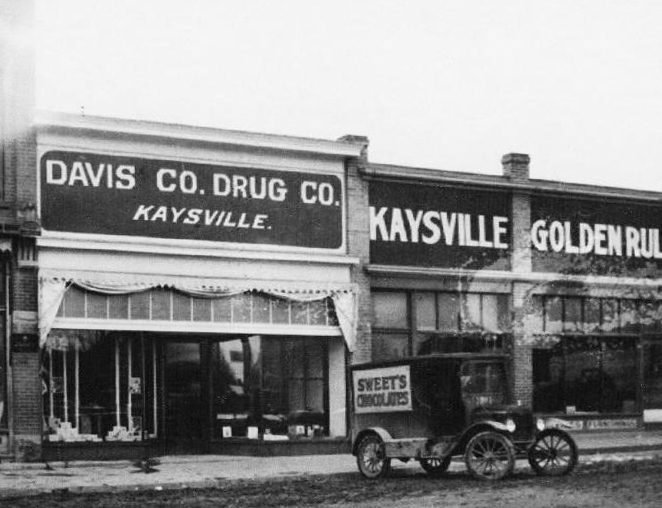 right side of photograph shows old Relief Society Hall
right side of photograph shows old Relief Society Hall
Mr. Gailey became the new proprietor of the building in 1914 and extensively remodeled the structure. The 2nd Golden Rule was housed here 1914-1927 J.J. Bowman had moved his Golden Rule store from across the street east at 128 North Main to this location. The telephone Co. moved from the top floor of the Sheffield store in 1925 to this location and served the people until their new building in Layton was built in 1960.
A small frame building, which was once the post office, stood just before the red brick Relief Society Hall. The 1953 Mountain States T & T phone book placed the post office at 73 North Main Street. It became the first central office for the Rocky Mountain Bell Telephone Company.
LaMar Green, then later Carl Racker, had a Western Auto and Hardware store here for many years. The building was later purchased by Dean Sanders and became Kaysville Glass. Kaysville Glass did business in the location beginning in 1959. (Ross)
Hop Gee Chinese Laundry, Beazer Building / Confectionery / Chick’s Barber Shop / Skyline Building and Investment
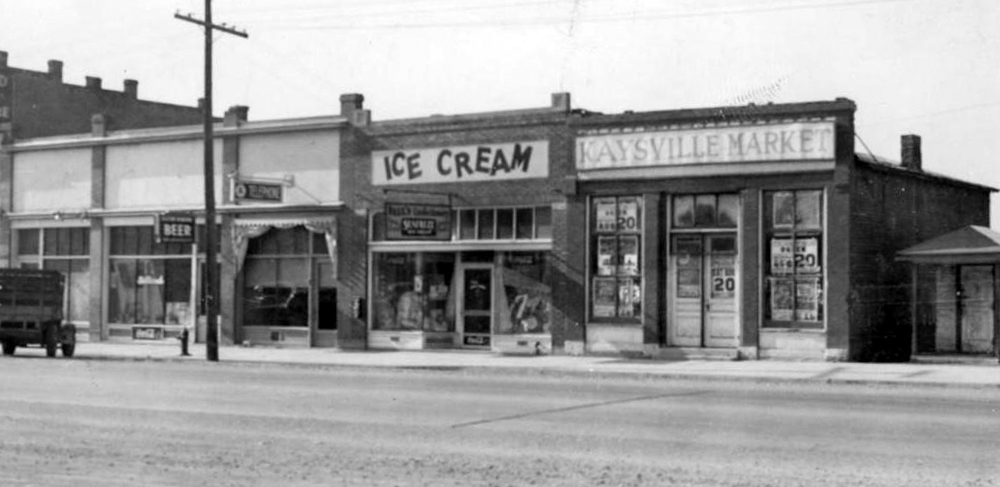 L to R: Chinese Laundry, 79 North; Jamison Confectionery, 81 North; Blamires Meat Market, 83 North
L to R: Chinese Laundry, 79 North; Jamison Confectionery, 81 North; Blamires Meat Market, 83 North
In 1897, a little more than ten years after Chinese workers helped build the railroad that met in Promontory, three men of Chinese descent move to Kaysville. They were Yee Kee, his son, and Hop Gee. They lived in Ogden, moved to Kaysville, later to Layton and back to Ogden. Hop Gee was a farmer who grew vegetables and herbs on a small space of land in what is now Layton. In the summer, they sold these items door to door. During the winter months the pair sold rice, dried vegetables and spices. In their thirties, they and had lived in the U.S. for several years prior. The men founded a laundry on property north of the Ladies Aid building. Hop Gee Laundry was the sign mounted to the store front. The news stated, “Hop is the first Celestial [Chinese immigrant] to take an abode in Beazer Building,” the first to move to Kaysville. (Clipper) It was believed the men lived in the rear section of the building. “Yee Kee, Chinese peddler and laundryman gladly contributes money to the fund for the families affected by the miners who lost their lives in the Schofield [Utah] mine disaster. (Salt Lake Herald) They also celebrate Chinese New Year’s by giving the customers of Kaysville candy and nuts.” In 1910, several Kaysville teenagers harassed and played numerous practical jokes on them. As a result of the harassment, they moved to Layton and a couple of years later back to Ogden. No trace of them after that.” (Sanders)
A number of sweet shops followed one upon the other including W.S. Stove Confectionery, Jamison Confectionery and Ice Cream Parlor, Kaysville Confectionery, M. W. Phillips Bakery and Confectionery, Tom Tucker Dairy and Confectionery.
From the 1920s to 60s, Chick Scofield’s Barber Shop held occupancy of 77-79 North Main with Skyline Building and Investment Co. sharing part of the building from 1952 to 1958. The Crafty Lady sold plaster crafts in the late 1970s where women could paint and finish gifts and décor.
Blamires Meat Market / Health Studio: Verna Walton Massage / Ursula’s Hair Fashions/ Ballet School/ B & W Variety
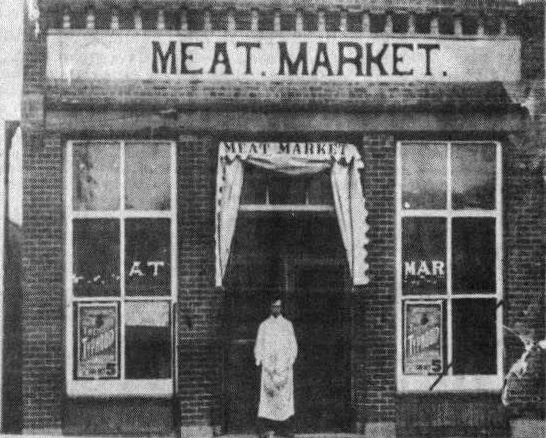 Meat Market. a.k.a. Blamires Meat Market. Robert Blamires owner. Wayne Chipman (pictured) managed by James Chipman.
Meat Market. a.k.a. Blamires Meat Market. Robert Blamires owner. Wayne Chipman (pictured) managed by James Chipman.
Located at 83 North Main Street, the meat market used a delivery wagon which drove around to customers so they could choose the piece of meat they desired. The meat was then cut on the spot. According to a 1922 article, “The city meat market has ‘changed hands from time to time, for some years past owned and operated by Nick Bonnemort,’ under whose management it has grown and expanded until it is “where the most discriminating buyers can have their wants supplied.” (Prosperous) It was variously known as The Kaysville Market, Blamires Meat Market or Feller Meats.
B & W, Kaysville’s first variety store, was on the west side of Main Street by May 1947. Mountain View Homes, Verna Walton’s Health and Massage Studio, The Blue Door (art and pottery) quickly followed until, in 1967, it became the first Clytie Adams Dance Studio.
Ursula’s Hair Fashions established occupancy at 85 North Main from 1958-2005, over 50 years. The original hair dryers were maintained and in use until closure.
Photo above shows a Cleaning Village sign. During the 1960s and 70s, Earl Goasland ran Earl’s Cleaners at this site. The two businesses may have been the same.
B & W, Kaysville’s first variety store, was on the west side of Main Street by May 1947. Mountain View Homes, Verna Walton’s Health and Massage Studio, The Blue Door (art and pottery) quickly followed until, in 1967, it became the first Clytie Adams Dance Studio.
Ursula’s Hair Fashions established occupancy at 85 North Main from 1958-2005, over 50 years. The original hair dryers were maintained and in use until closure.
E. A. Williams Store /Williams Peterson Drug Store
L to R: Dr. Rutledge, Hart Sanders, druggist Reese White.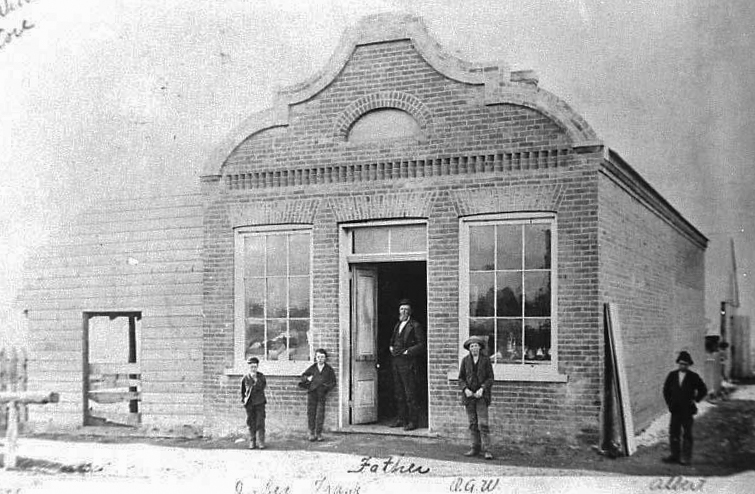 Sandblasting on the north wall of Faye’s Laundry exposed the original brick from the first Williams building shown. 1876.
Sandblasting on the north wall of Faye’s Laundry exposed the original brick from the first Williams building shown. 1876.
Ebenezer Williams in 1863 sold goods out of his home in a room adjoining his living quarters on 100 West. About 1876, he built a new, permanent store on the southwest corner of Main and 1st North. It was a one story, one room brick building made from brick produced by Samuel Ward on the Mountain Road.
Specialized in building hardware & dry goods but was a general mercantile store.
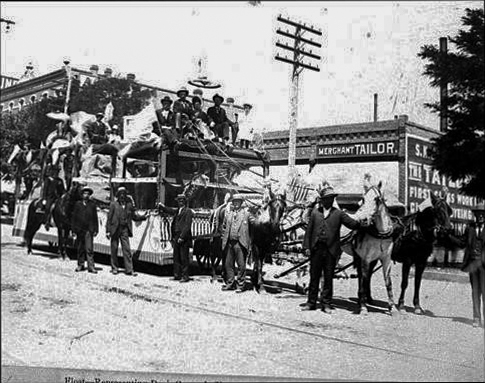 Parade float in front of Williams’ general store
Parade float in front of Williams’ general store
Around 1900, it became the first drug store in town. A second story was added, and the building enlarged in 1891 and this upper story became the entertainment center where dances and dinners were held, and later movies were shown. One corner upstairs became the City Council room until completion of a new City Hall across the street in 1943 (now the library.)
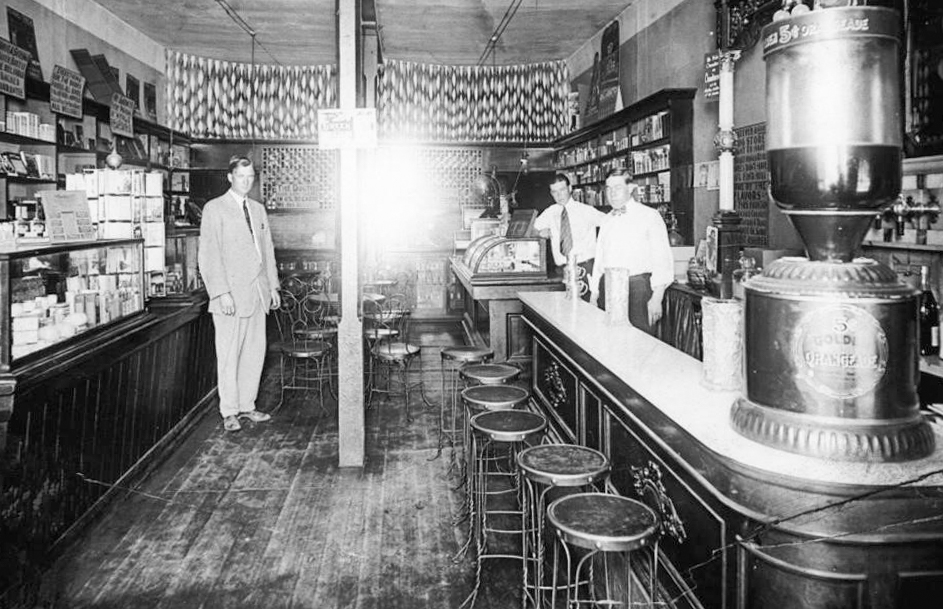 Williams – Peterson Drug Store
Williams – Peterson Drug Store
L to R: Dr. Rutledge, Hart Sanders, druggist Reese White.
Jesse Peterson druggist. Dr. Guy D. Rutledge, Dr. William Ingram partners
1891 he enlarged the building, adding another room and upper story. The second floor was used for dances, home dramatics, and later movies. Ada William’s first millinery shop was here.
Brown Lumber Company / Lunt Max Chrysler - Plymouth Company / Horsley Lumber Company
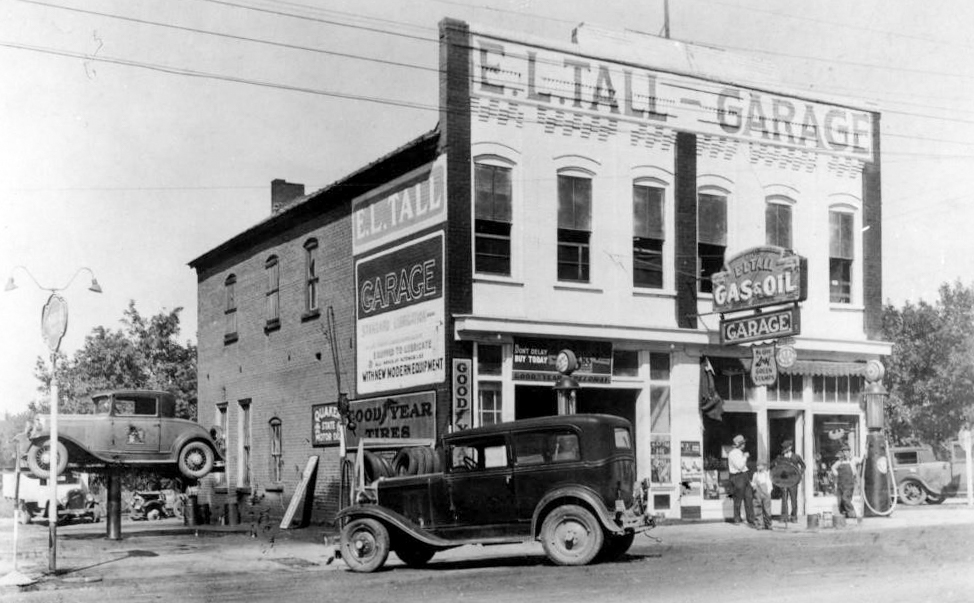 E. L. Tall Garage at William Store location ca. early 1920’s
E. L. Tall Garage at William Store location ca. early 1920’s
In 1922, the Williams building was transformed into an automobile garage. One newspaper reported, “Ern Peterson, proprietor of the Kaysville Garage, is again located in the Williams Block.” His establishment was equipped with “power of driving machinery for high class service.” Peterson built a lake-going boat capable of navigating the shallow waters of the Great Salt Lake. …” H.J. Barnes and J.J. Bowman are interested with Mr. Peterson in the construction of the [remarkable] craft.” (Prosperous) The photo of the E.L. Tall Garage shows that sometime during the 1920s, the garage was run by E.L. Tall.
A building suitable for the 1939 city offices and fire station was needed so this structure was adapted. When the city administration moved in 1944 into what is now the historic rock building at 44 North Main, yet another change took place and the building again became a garage at which time the upper story was removed. When Ralph Williams later took over the Williams building, it became an auto repair shop, then and automobile showroom, which was known as Williams Motor Company. In the 1950s, Lunt Max Chrysler- Plymouth showroom was at this location with Brown Lumber Company in occupancy by 1957.
Utah Oil Company / Bruce’s UTOCO Service /AMACO Service Station South
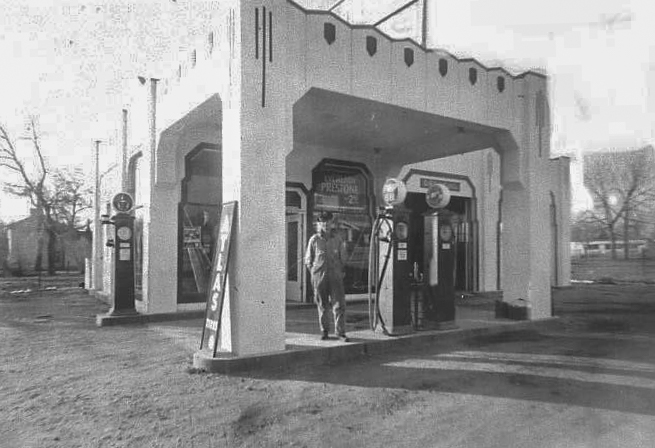 Utah Refining Co Service station 1st North & Main 1934
Utah Refining Co Service station 1st North & Main 1934
Van Sanders by the pumps. (Anderson)
At the turn of the century an orchard probably belonging to the Bone family provided a spot of country to the downtown area. On the lot across the street north of the Williams Building was a rest to what seemed like the encroachment of too much civilization. By at least 1953, that greenery had given way to the Utah Oil Company with an address of 107 North Main Street.
Bruce’s UTACO Service Station was the occupant in 1960, and later AMACO Service Station was filling and providing maintenance for Kaysville vehicles.
Duckworth’s Fairway Market / Harry’s Grocery Store
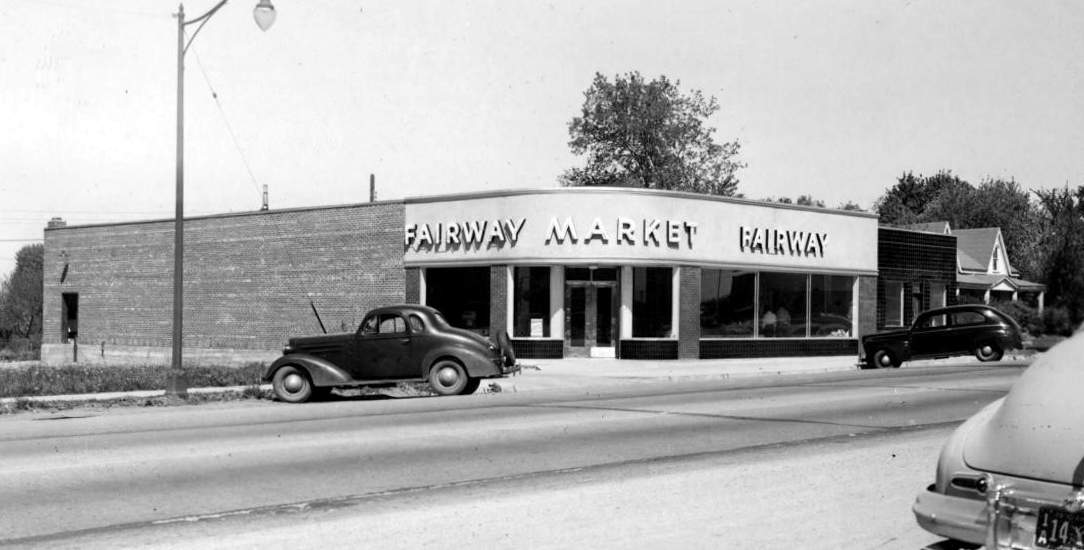 Duckworth’s Fairway Market / Harry’s Grocery Store
Duckworth’s Fairway Market / Harry’s Grocery Store
Before any buildings were on this section, it was open country, perhaps a continuation of the orchard which was on the corner. This distinctively curved building was probably built in the mid 1940s. It was occupied by Fairway Market beginning in 1947, Wayne’s Food Town 1959, Smith’s Food King 1962, and Harry’s U-Mark 1971.
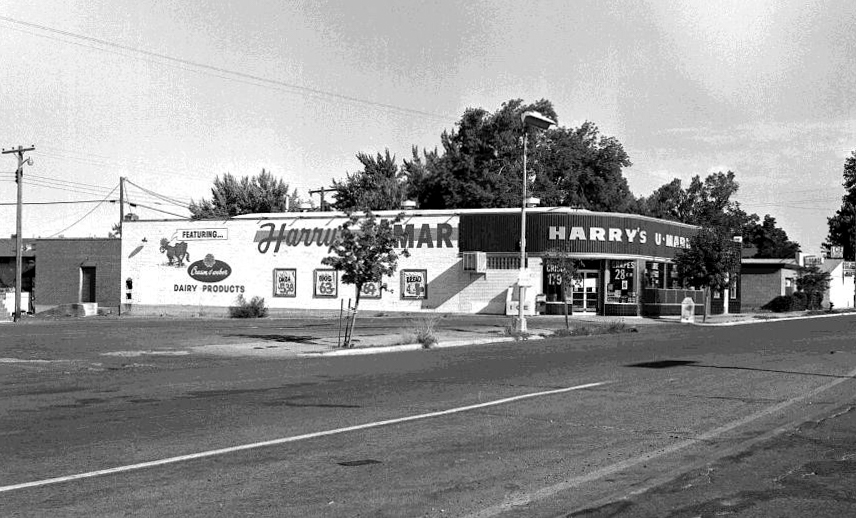 Harry’s U-Mark. ca. 1975. (Anderson)
Harry’s U-Mark. ca. 1975. (Anderson)
After grocery stores were no longer occupants, LaVar’s Flooring, Felt School of Dance, His & Her Hair Haven, Golden Touch Ceramics, and Kaysville Book / Beehive Book take turns on this site. Sometimes the floor space was split for as many as three business at a time.
John C. Owen Blacksmith / William Bone Shoe Shop / Second & 3rd Stewart’s Gift Shop
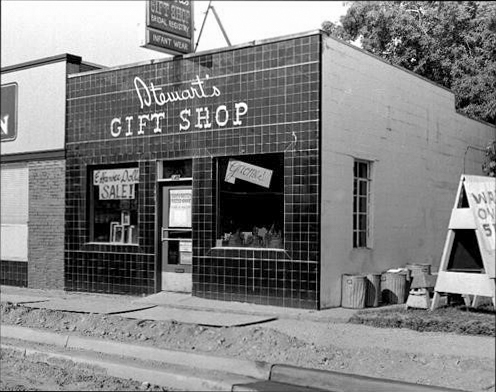 2nd Stewart’s Gift Shop. 1995. (Bob Anderson)
2nd Stewart’s Gift Shop. 1995. (Bob Anderson)
On Main Street between 1st & 2nd North in early days, stood the C. Owen Blacksmith shop. The William Bone’s Shoe Shop was south of his home in proximity to the blacksmith shop, located at 149 North Main.
The grand opening of the second Stewart’s Gift Shop took place in the spring of 1955. This building with its black tiled front exterior was replaced in the fall of 2004. The previous building providing parking space and the new building larger and more spacious built to the north. Artwork by renowned Kaysville artist, LeConte Stewart, was sold out of both buildings in addition to Madame Alexander dolls, chinaware, and children’s clothing. Stewart’s closed its doors 2011; it had been in business 70 years.
William H. Bone Residence / Major’s Bakery / Longhorn Lounge/ Higley Art Studio / Davis County Cold Storage
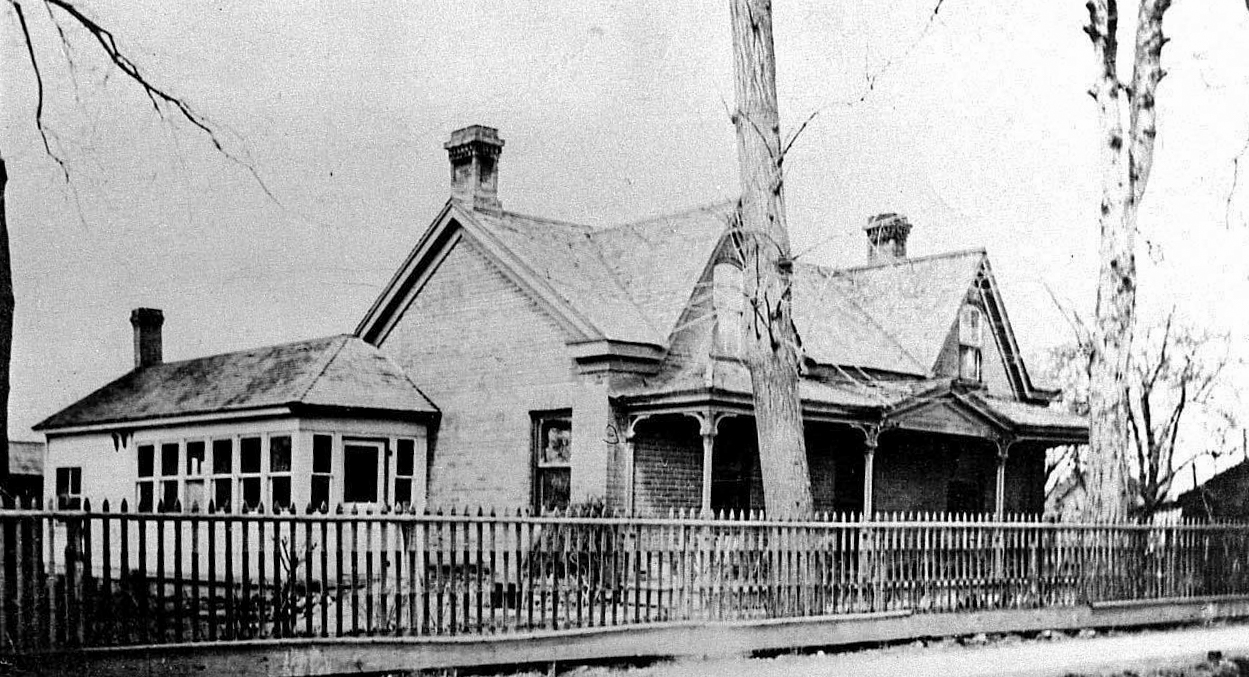 William Henry Bone residence. 1865 (Anderson)
William Henry Bone residence. 1865 (Anderson)
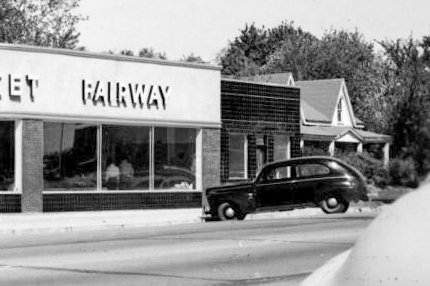 Beyond the Fairway Market is the Bone Residence
Beyond the Fairway Market is the Bone Residence
Three generations of the Kneedy family were the owners of Davis County Cold Storage. Its original location was 205 North Main, but a new structure was built in 1957 north of the bakery.
Major’s Bakery was managed by Paul Major beginning in the 1940s; the family lived in the old Bone home and added a small brick bakery in front. Their alligator jaw pastries were a favorite. The Longhorn Lounge took over the bakery building in the mid-1960s.
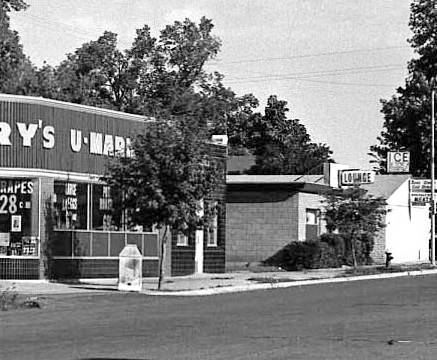 Beyond Stewart’s Gift was the Longhorn Lounge and further north the Davis County Cold Storage. ca. 1975.
Beyond Stewart’s Gift was the Longhorn Lounge and further north the Davis County Cold Storage. ca. 1975.
Christopher Layton “White House”
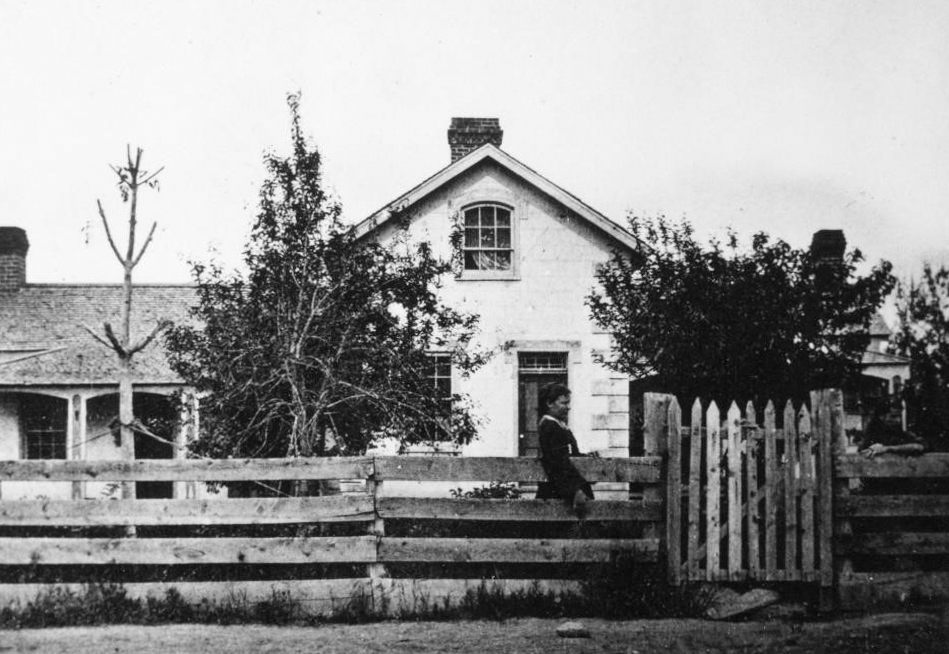 Christopher Layton’s “White House.” ca. 1890 (Heritage)
Christopher Layton’s “White House.” ca. 1890 (Heritage)
Christopher Layton, for whom Layton City is named, originally settled within the boundaries of Kaysville. Three connected structures were shown on this southwest corner of 200 North and Main Street on an 1894 map. Layton had several polygamist wives, so this building was only one of the residences. He built this house in 1869 for Sarah Barnes Layton.
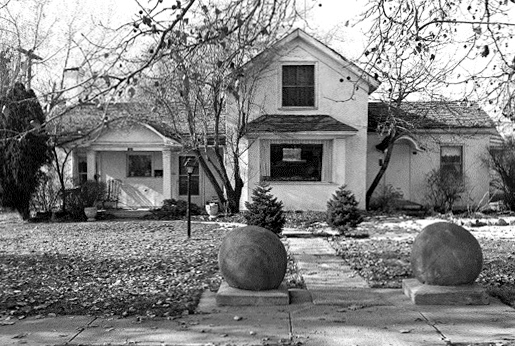 Christopher Layton’s white home when John and Sarah Kneedy lived there in the 1940s.
Christopher Layton’s white home when John and Sarah Kneedy lived there in the 1940s.
Looking northwest at Main Street
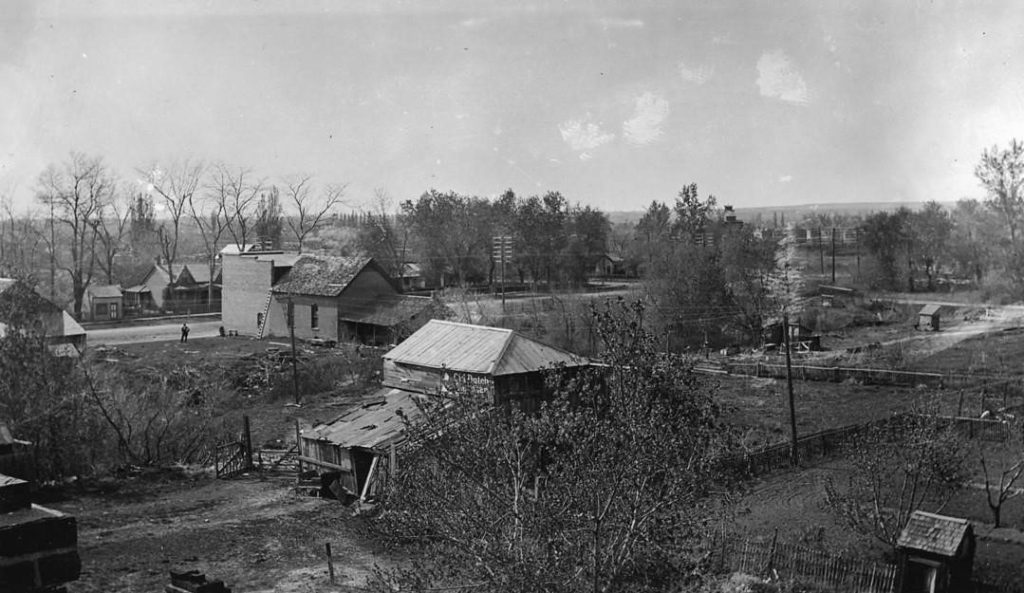 Front of buildings west of Main, rear of buildings east of Main
Front of buildings west of Main, rear of buildings east of Main
The southeast corner of 200 North and Main Street was quite empty during the early 1900s with the first commercial building the Barton Undertaker and Furniture Dealer building. Across the street west is a glimpse of the white Layton house on the southwest corner, then looking south (left) the Bone home and shop.
Brick Wood Company / Stewart-Perry Pontiac-Lincoln / Kaysville Builder’s Supply/ Circle K
The southeast corner of 2nd North and Main was undeveloped until the 1950s when Brick Wood Company, a car dealership. And then in 1957 when Earl Tall’s garage and automotive repair shop took over. By 1960 Stewart-Perry Pontiac – Lincoln was on this site. KBS were at the Chick Heywood Building until 1973 when they moved to 180 North. When Kaysville Builders Supply moved to 2nd North in 1976, Ralph Lewis changed name to R & R Builder’s Supply. Circle K moved into the corner plot in 1975, followed by 7-11, then Verizon.
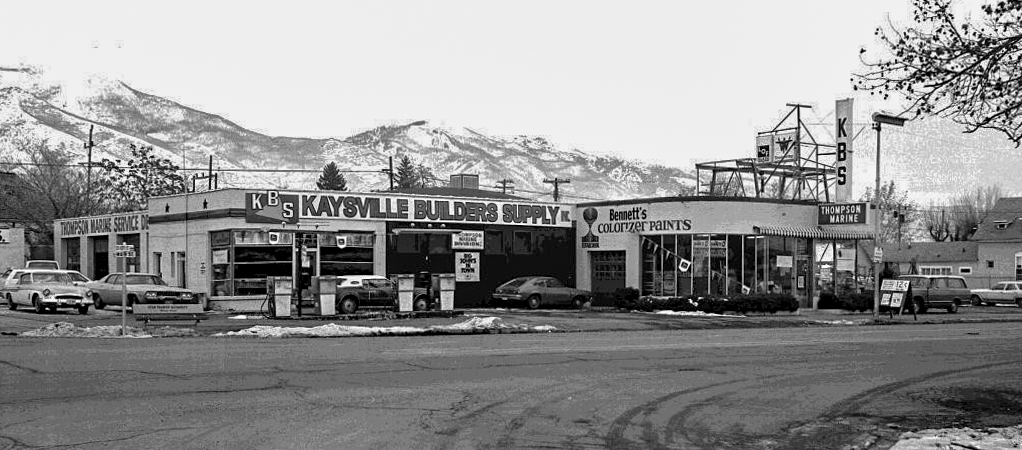 Kaysville Builders an old Earl Tall service station prior to moving to
Kaysville Builders an old Earl Tall service station prior to moving to
86 East 200 North. April 1976, (Anderson)
John Barton Undertaker & Furniture Dealer / G. B. Galbraith Plumbing / King Pool Hall / Layton Apartments
An 1894 map shows a cobbler’s shop at about 150 North Main Street. John Barton, however, is well documented as having two funeral parlor and furniture shops combined, one at 148 North Main Street and the other on 100 North.
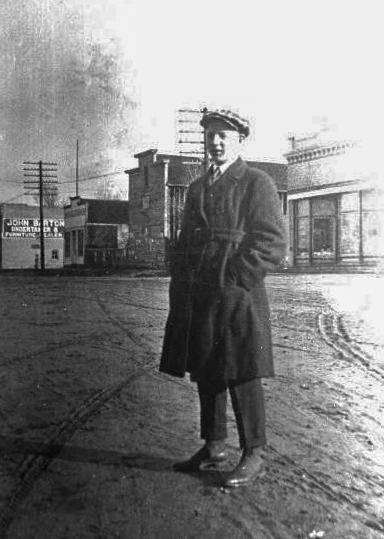 William Barton – shows east side of Main Street
William Barton – shows east side of Main Street
including John Barton building ca. 1930
He made furniture by request or placed special orders for customers from eastern manufacturers. He sold only the “very best” it was said. Chippendale furniture and Wilton rugs that are considered high quality. In addition, he offered a full line of undertaking services and caskets were displayed in the front window of the dealership. His services included hearses to carry the coffin to the chapel or cemetery. Those used by Barton were first of the horse drawn type and then a motorized version.
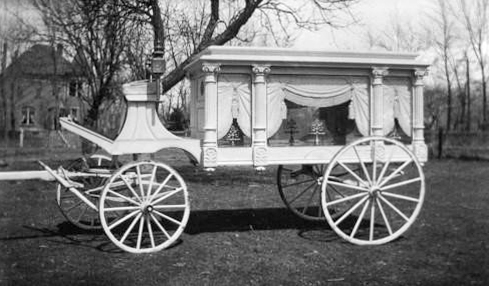 ca. 1900. Heritage Museum. White hearse for women, black for men.
ca. 1900. Heritage Museum. White hearse for women, black for men.
After Barton died, G.B. Galbraith took over. In 1922, John King conducted a pool hall in the Barton Building. (Prosperous) By the 1970s, the building was Layton/Galbraith Apartments.
1st Clover Club Manufacturing / 1st Kaysville Builder Supply / Lenders Loans
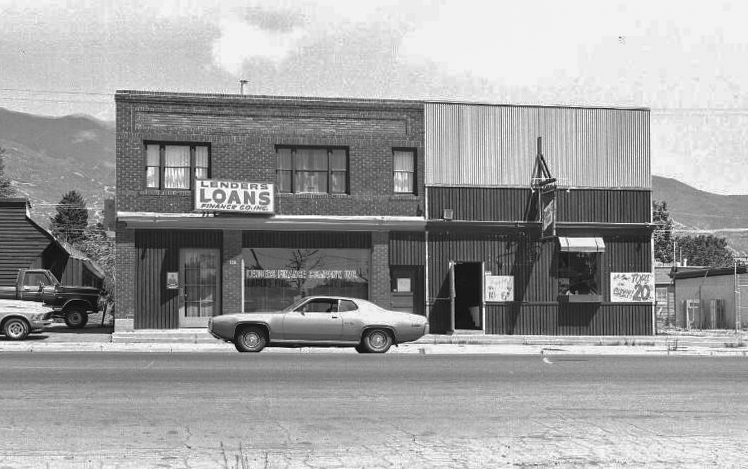 Loan offices at 128 North Main. July 1978. (Bob Anderson)
Loan offices at 128 North Main. July 1978. (Bob Anderson)
In about 1935, the building that had been various saloons and the 1st Golden Rule store was torn down. The Chick Heywood Building went up in its place. Street addresses often changed when demolition and construction took place.
George and Bonnie Heywood lived in the upstairs of the Chick Heywood Building. for many years. He was a carpenter until the 1950s when he became a mechanic. Other renters on the second floor of this unit, Hod and Clover Sanders, set up their first potato chip making and bagging operation in 1938. Their product was so popular that they only stayed about a year before moving to a manufacturing facility on 1st North.
In 1947-1950 Sharon Builder’s took over the lower floor. A few years later they sold out to Kaysville Builders and occupied the lower level with apartments still being rented on the top floor.
Lender Loans were the tennants during the 1970s. Through the years the building has continued to host a variety of businesses including Purdy Eye Center and Charlene Sowby’s art store called the Collection Connection.
Swan Saloon / 3 Bills Saloon/ 1st Golden Rule Store / Robins Lunch
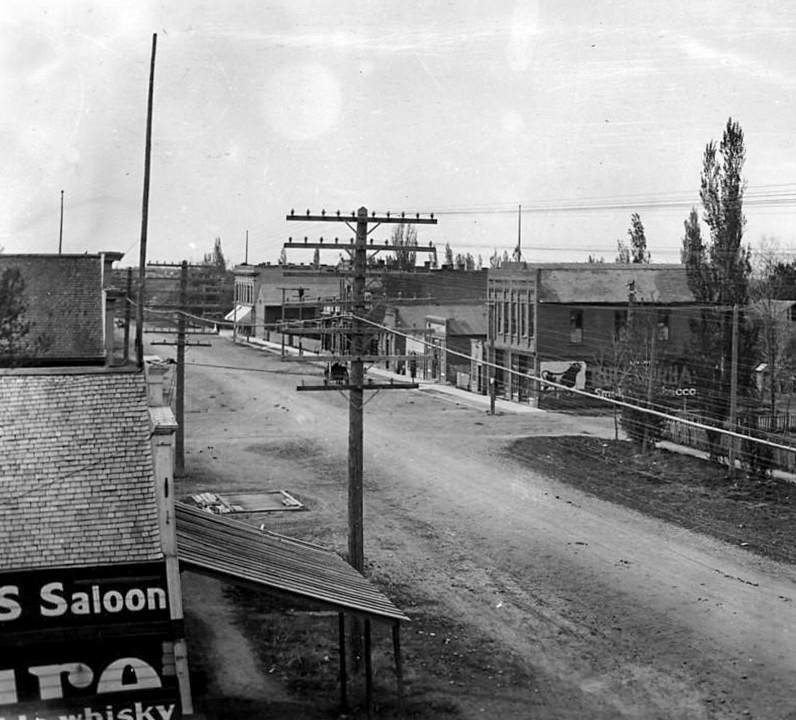 East Main Street Looking South
East Main Street Looking South
The Swan Saloon was a very early business in Kaysville, in business by at least the 1880s. It had an on and off history, changing management hands several times. The photo with a painted advertisement on the brick shows it on the east side of Main Street approximately 142 North before it moved to 1st North.
In the 1913 Davis County Clipper newspaper was printed the notation that “The 3 Bills Saloon is being painted and wallpapered and fitted up to be used as a store.” Bowman’s Golden Rule store was moving in and beginning sales.
Granary / Beesley Ice House
An 1894 map located a granary north of the Stewart-Burton Building. Years later at that location the building was renovated into an ice business. At 138 North Main Street, ice was stored in this building for summer use. The two-story building had only one door and a loft opening. Ice was covered with saw dust to keep it from melting. Adam Beesley conducted the ice business making business for several years by collecting ice from small ponds and then storing it in a “little wooden building.
1922 news report titled “Beesley Likes Cold Weather” announced that the Davis County Ice Company had been newly organized and a “modern ice making machine” was installed was the primary mover in the enterprise and is the chief stockholder. Beesley had purchased the old granary and an ice elevator was installed. The ice plant was put in operation earlier during that first summer and turned out a fine product, furnishing ice for Farmington north. Two auto trucks were employed to delivered. While as much as 2,500 tons of ice were manufactured and stored onsite, it continued to be obtained from the Beesley ice pond at 850 East Crestwood Road, too. (Reflex)
